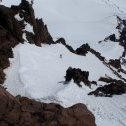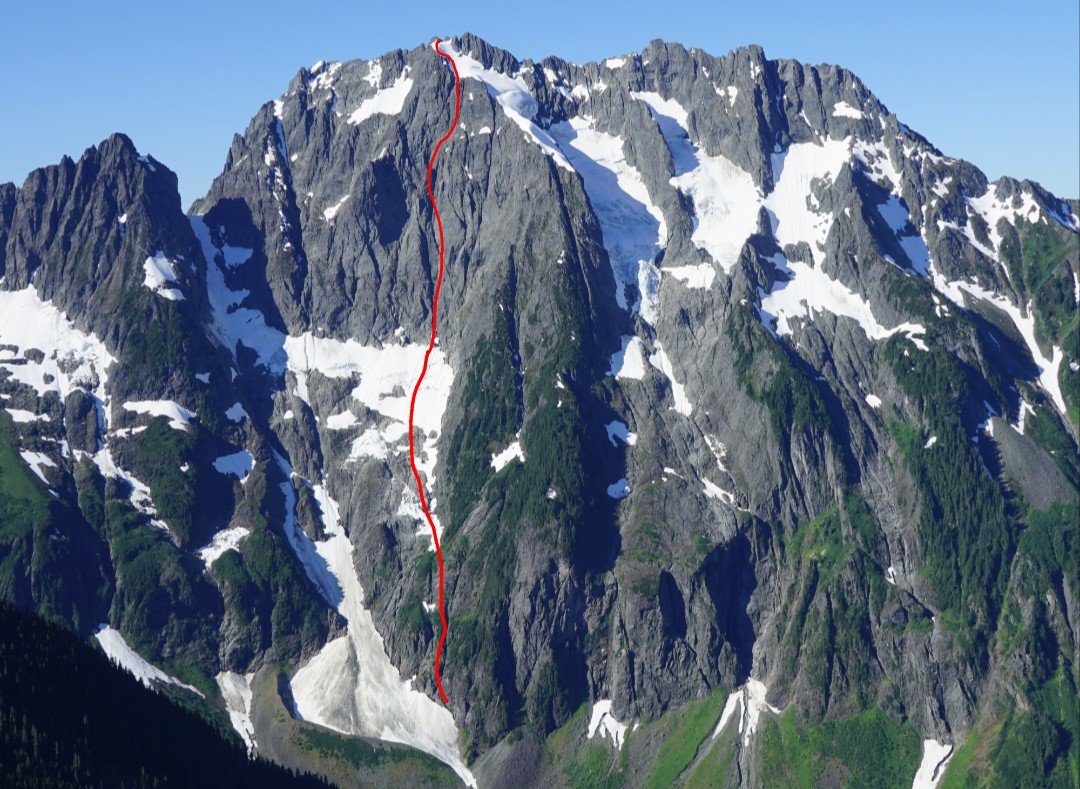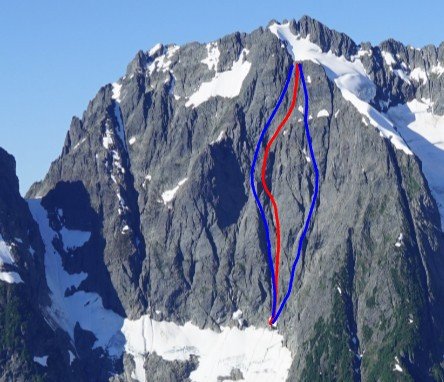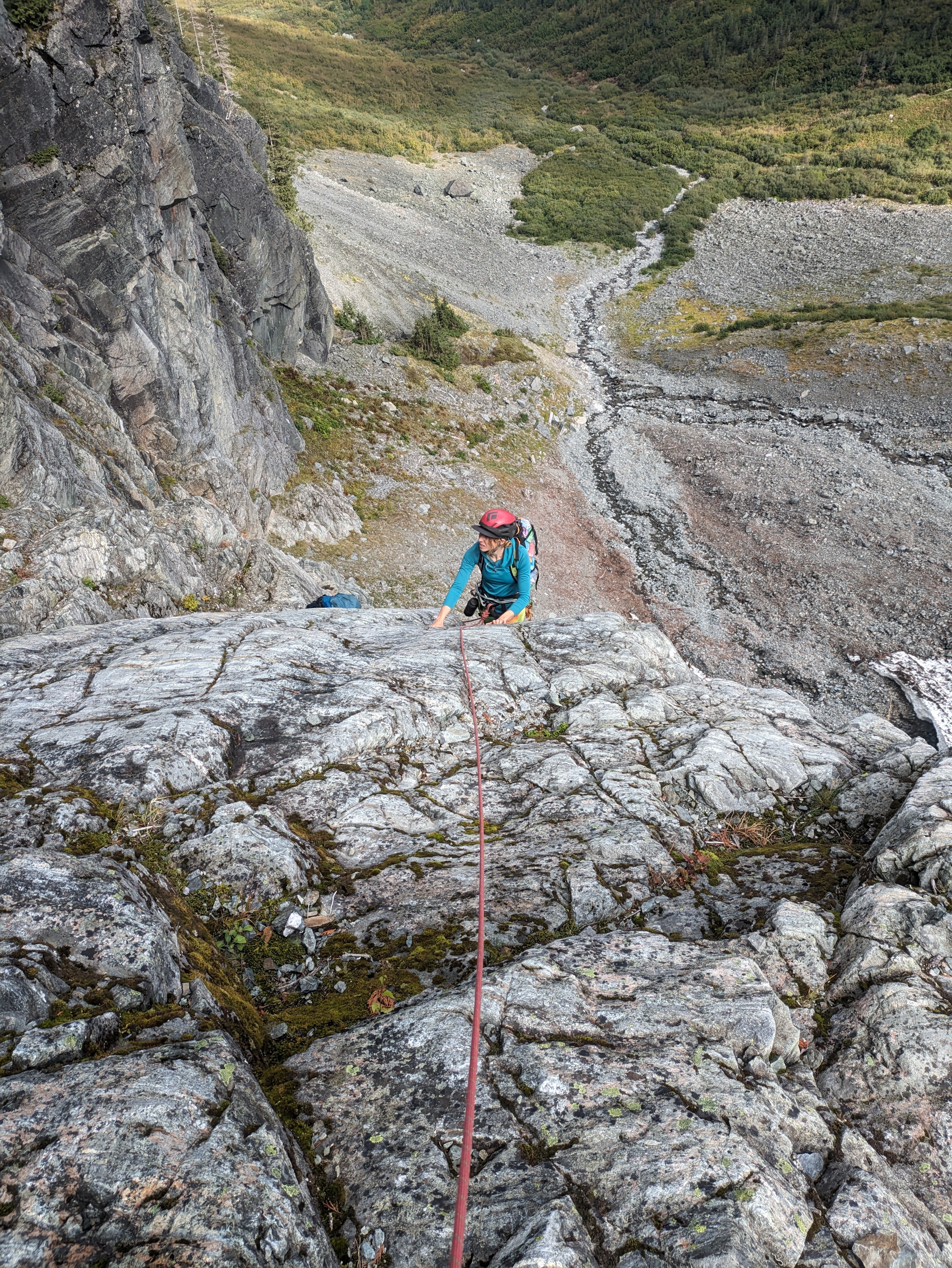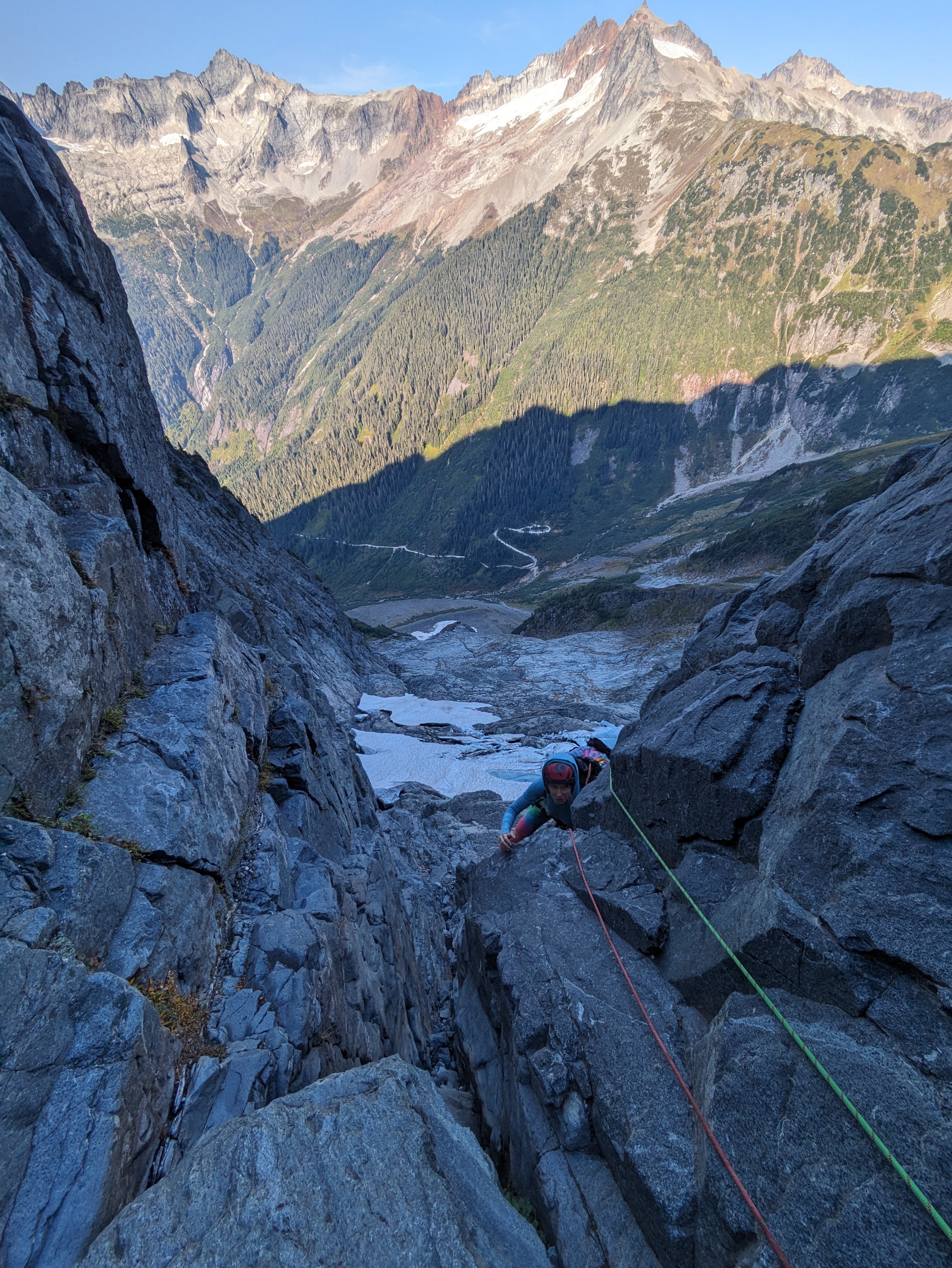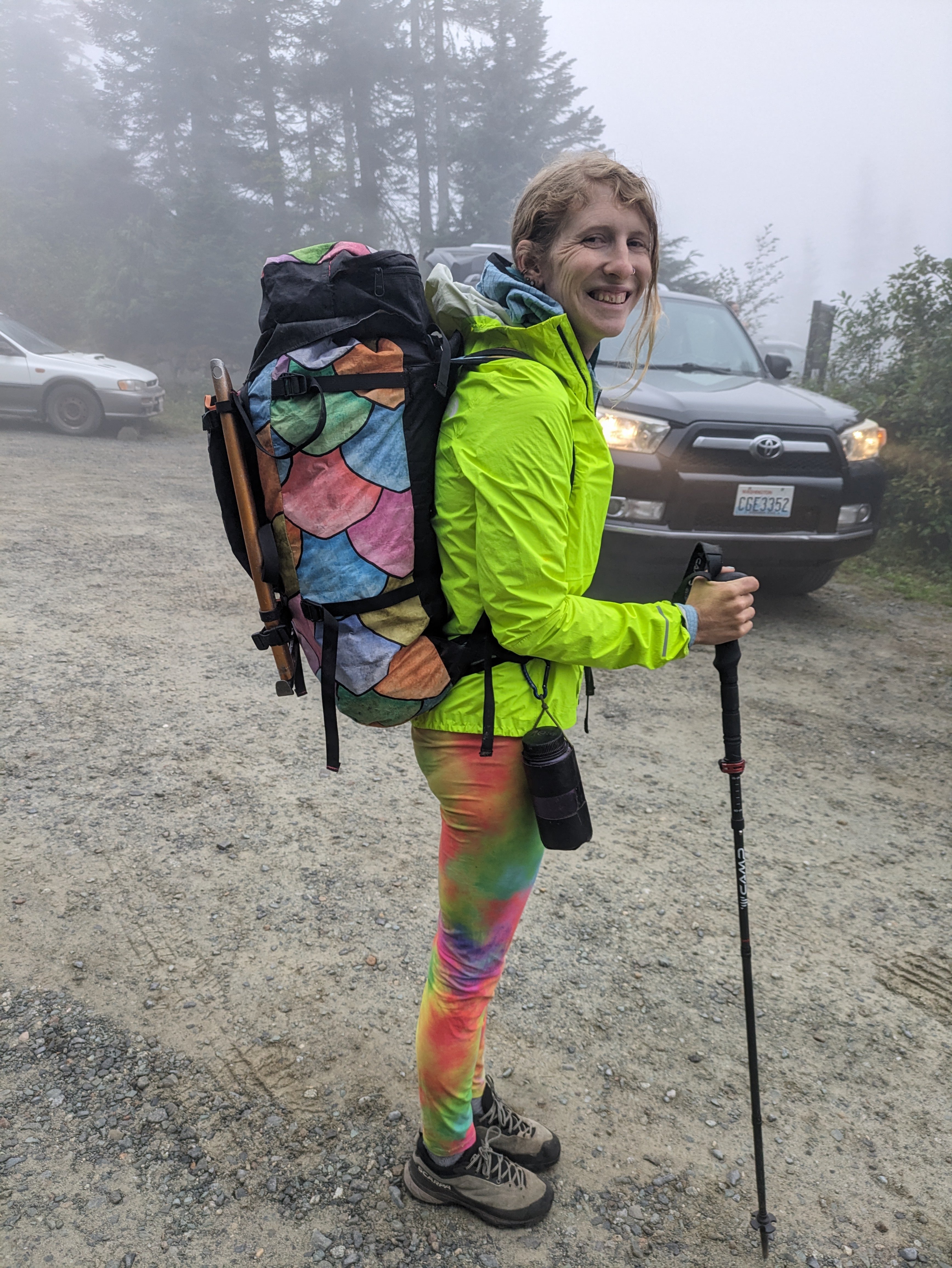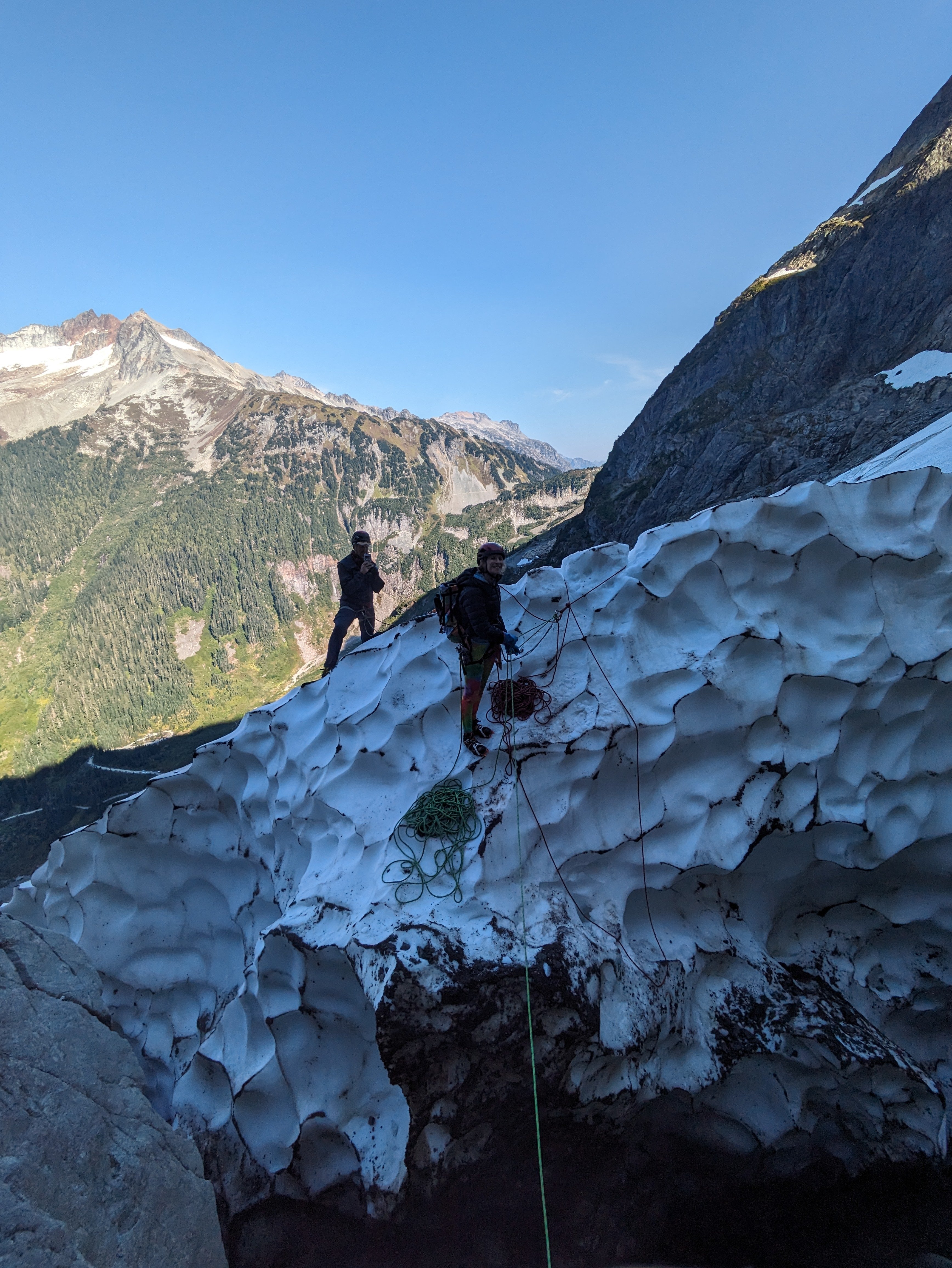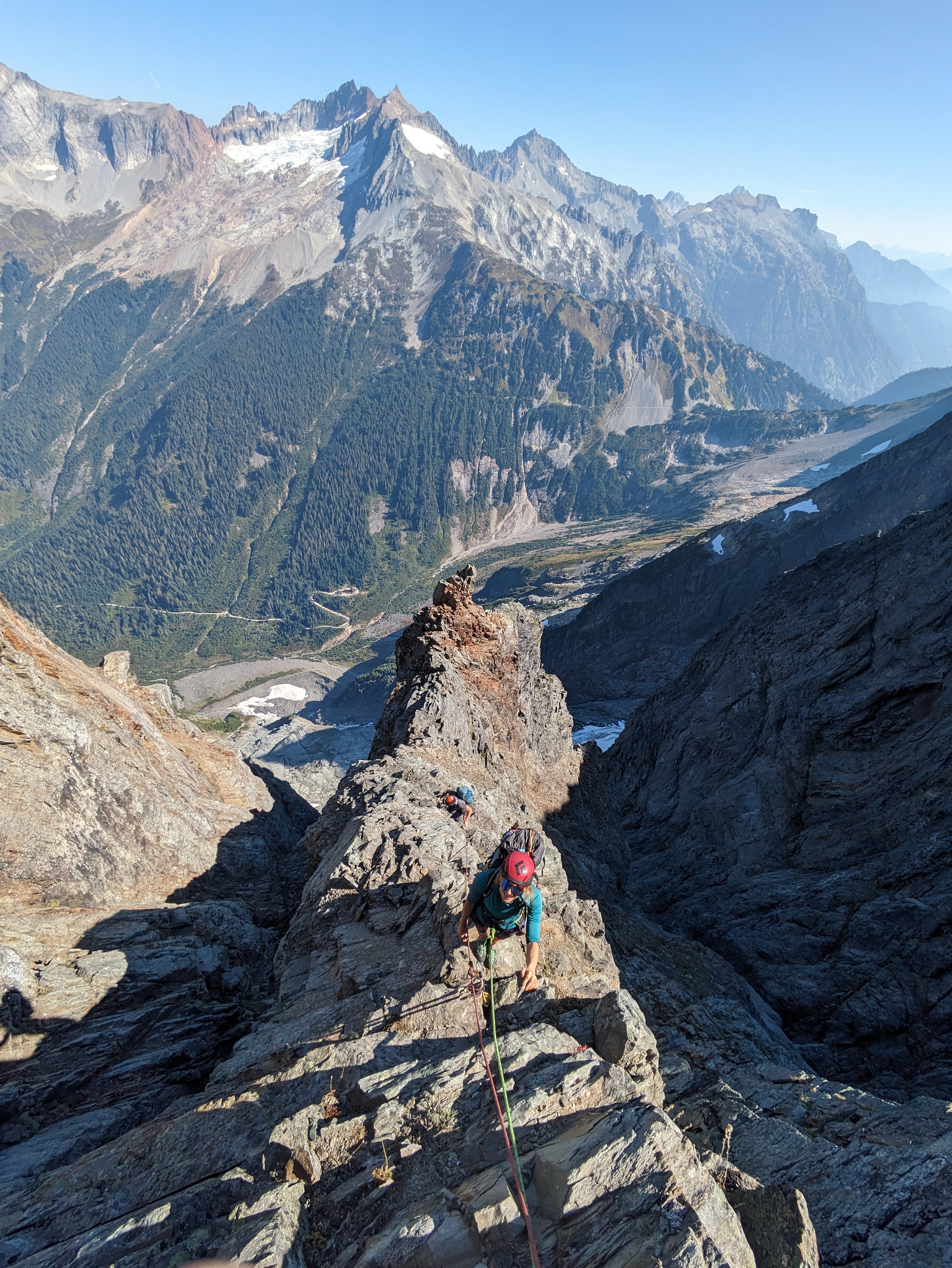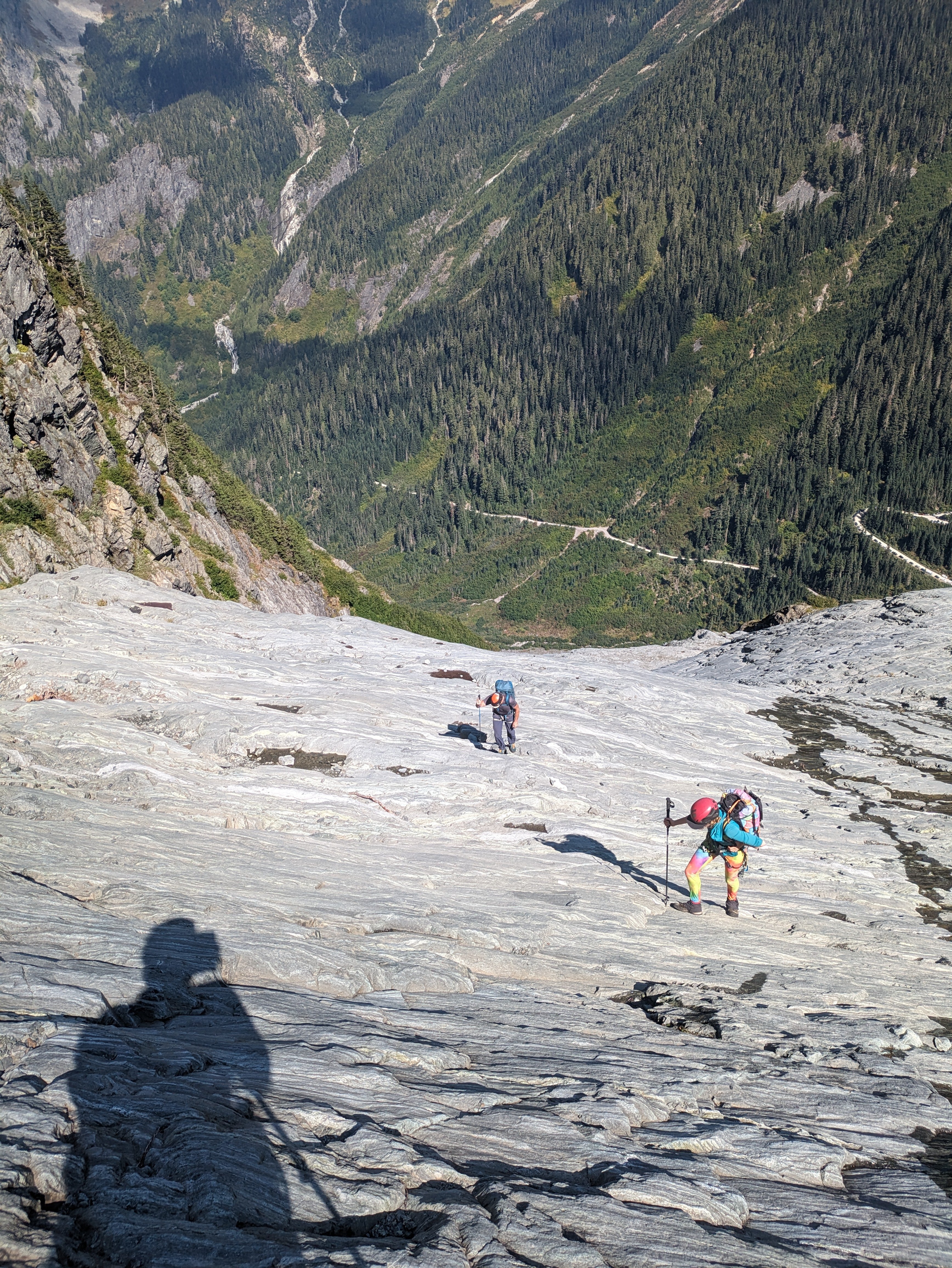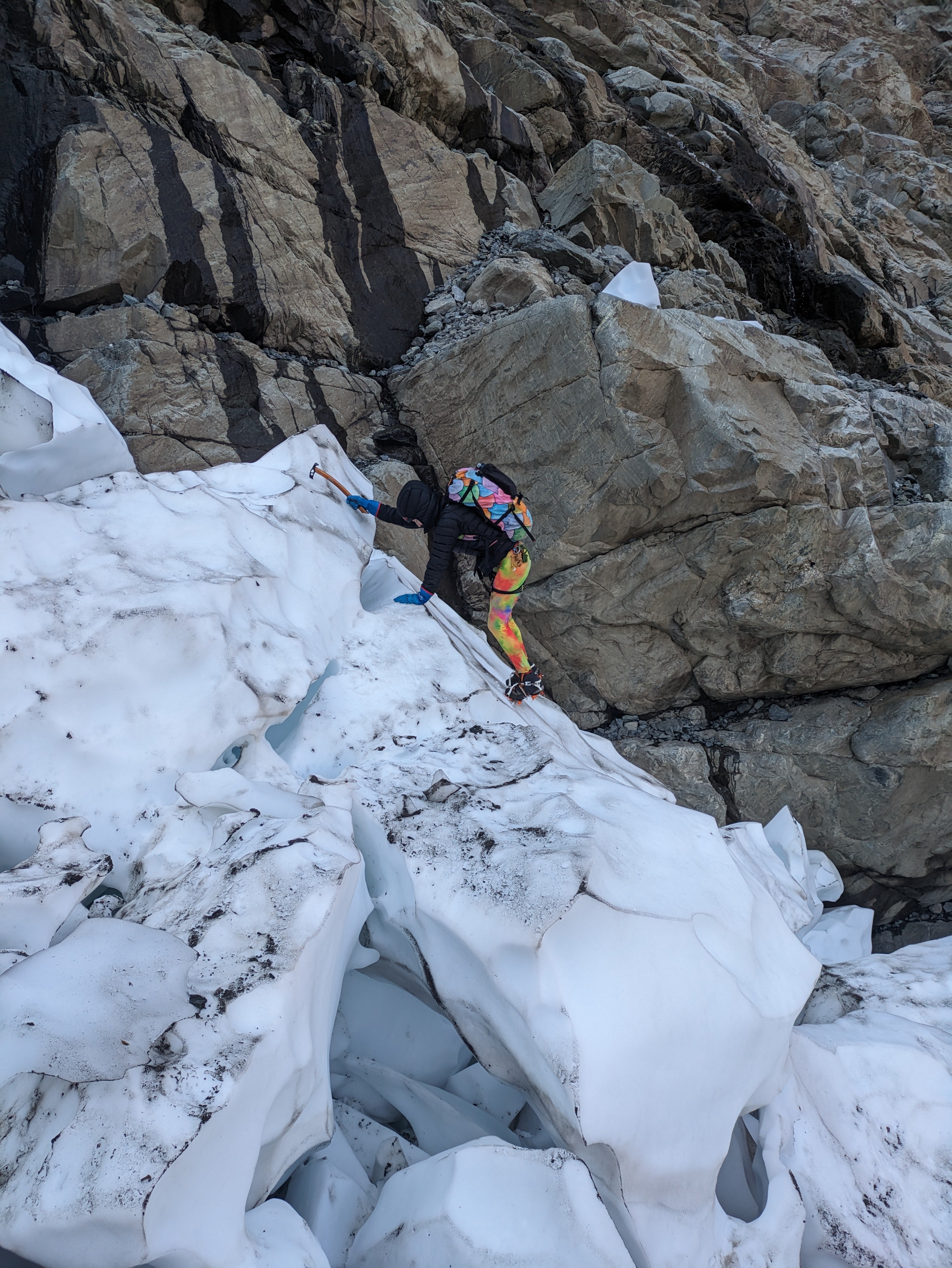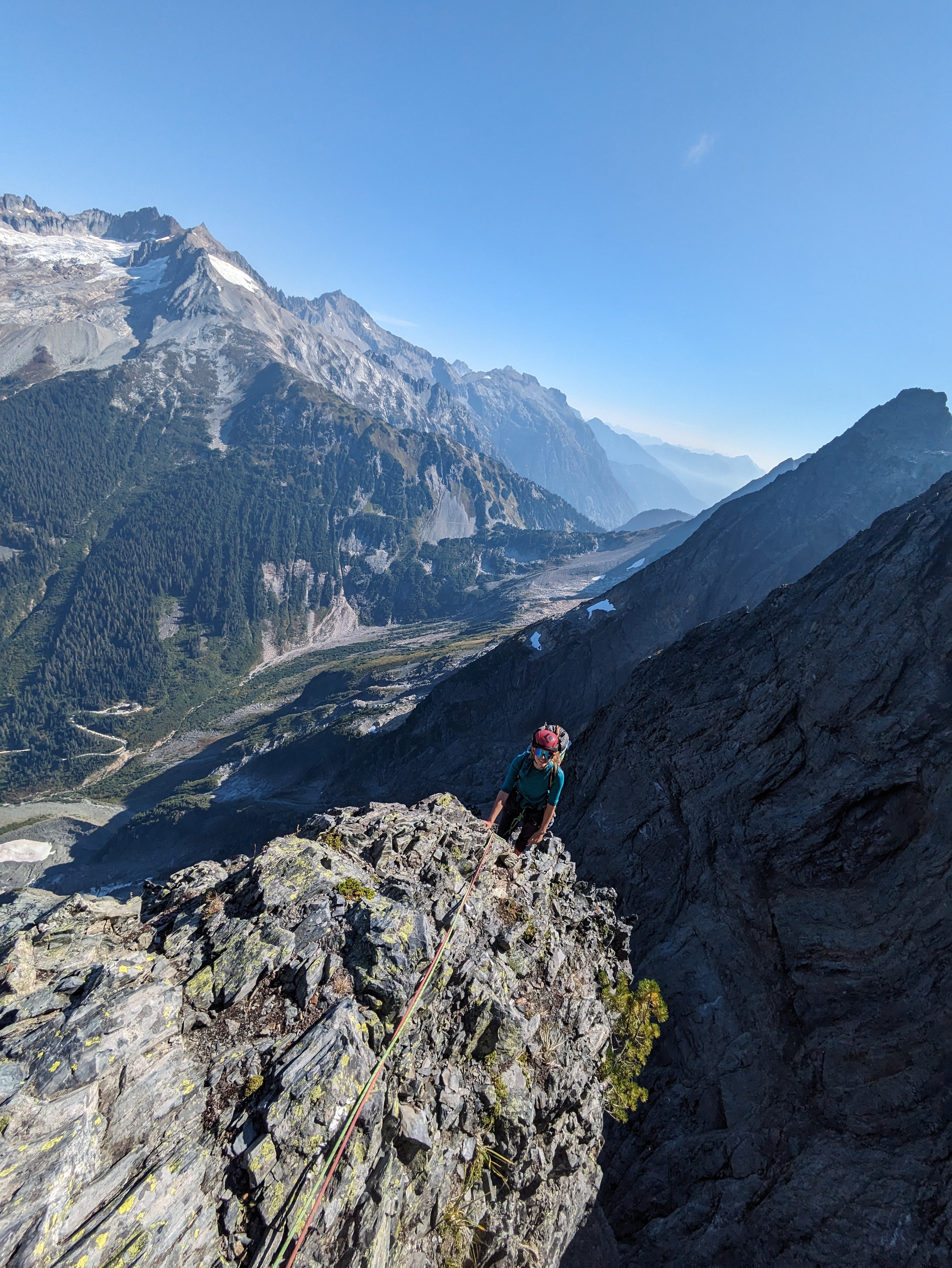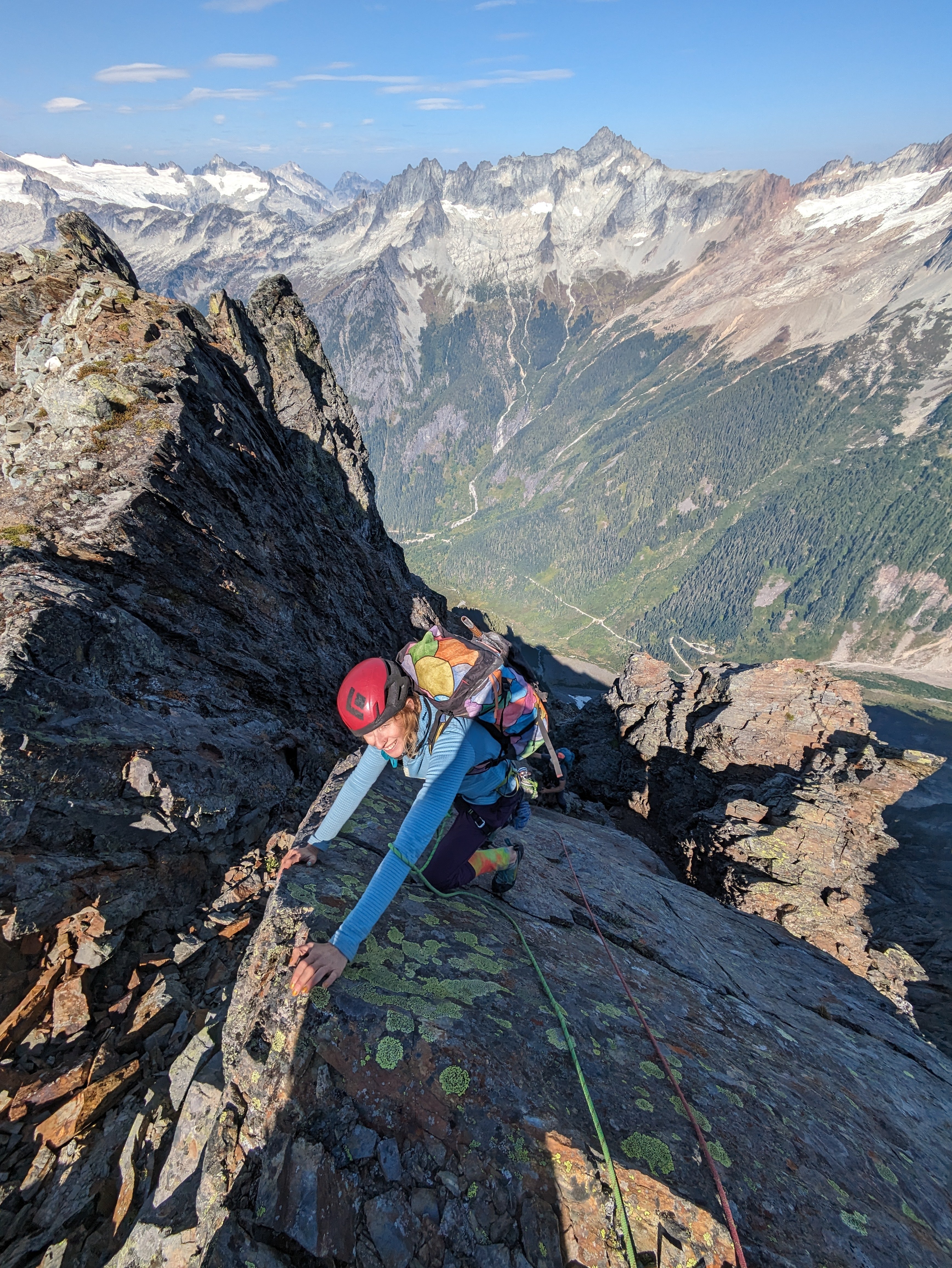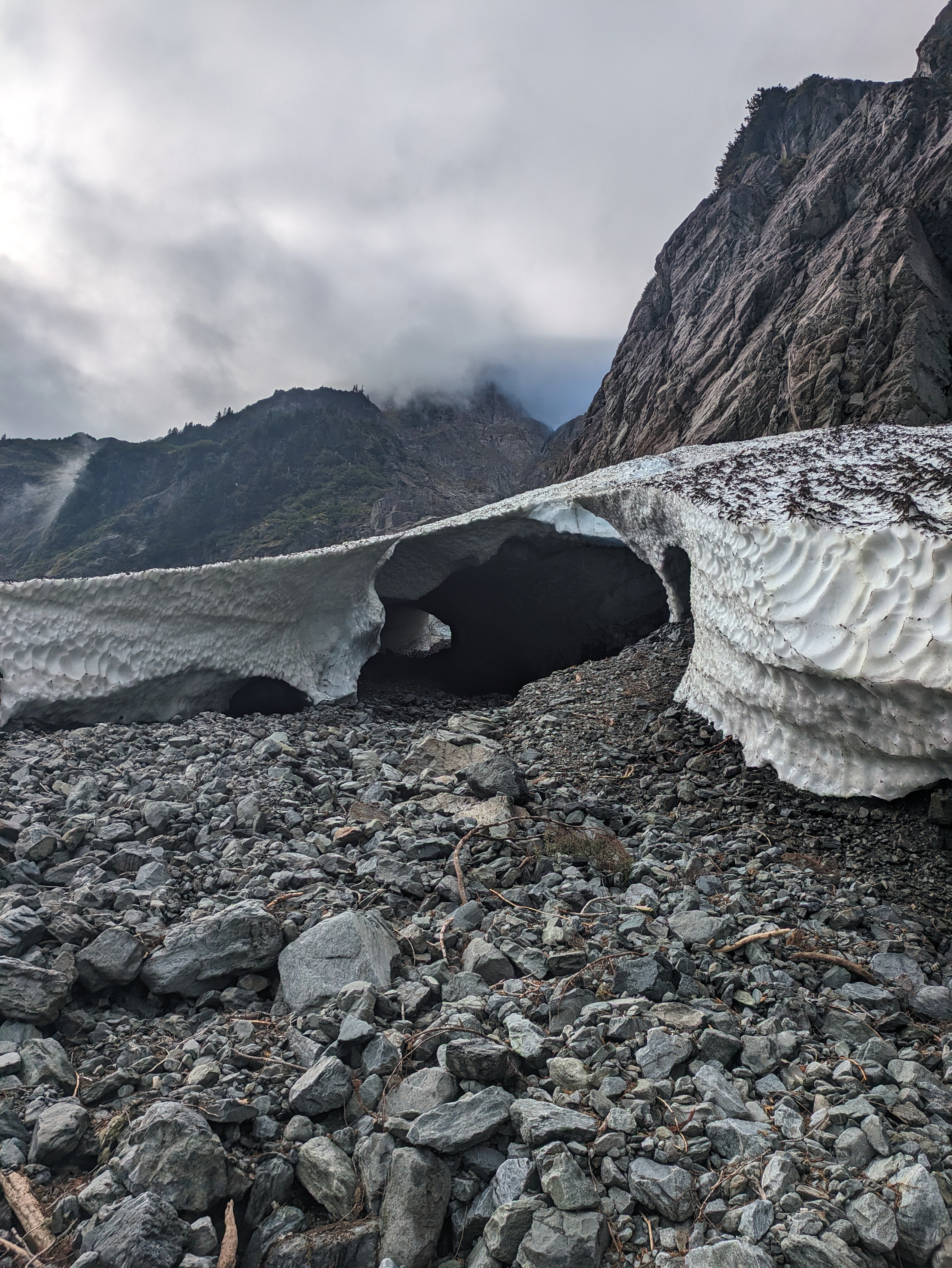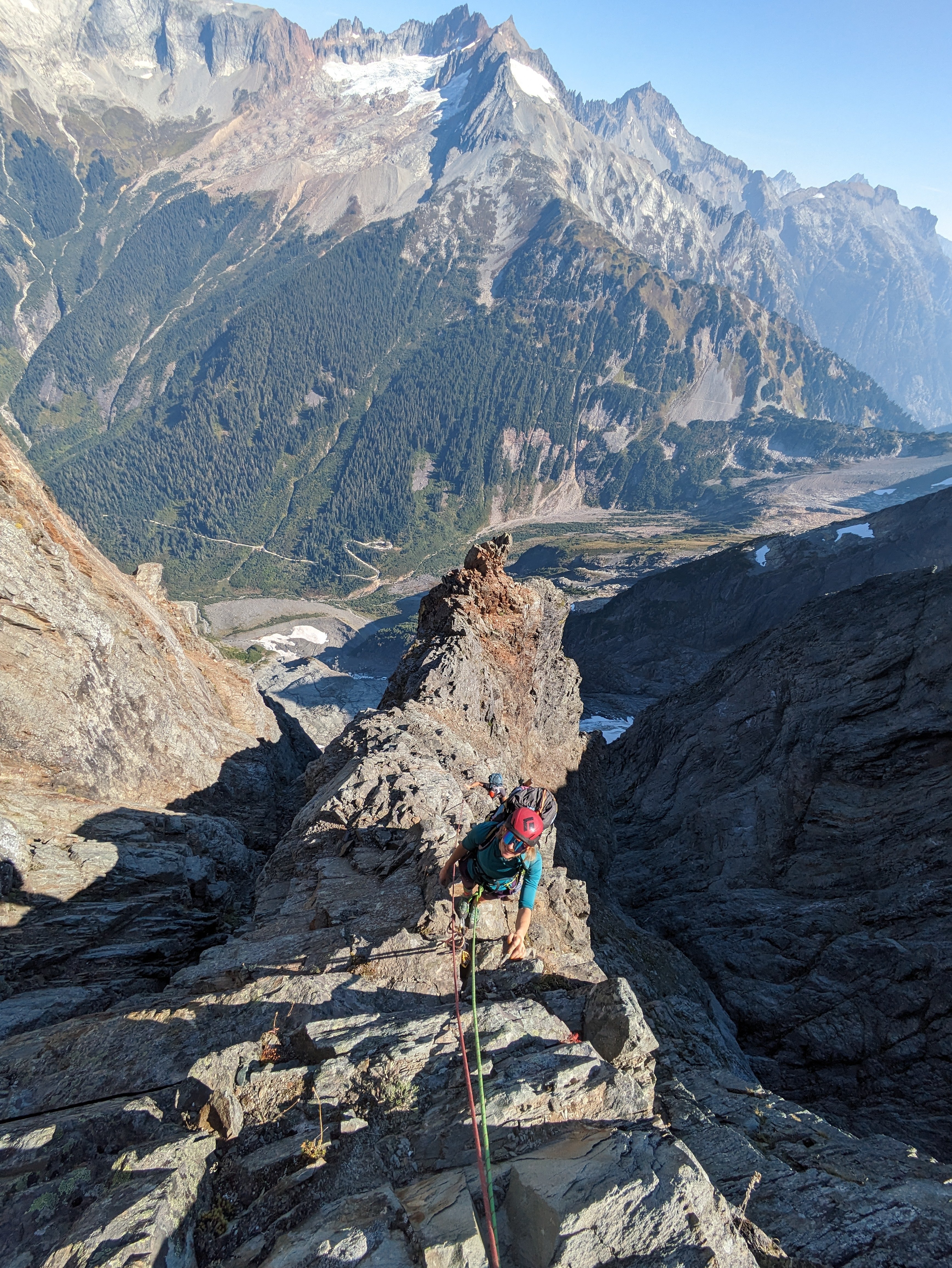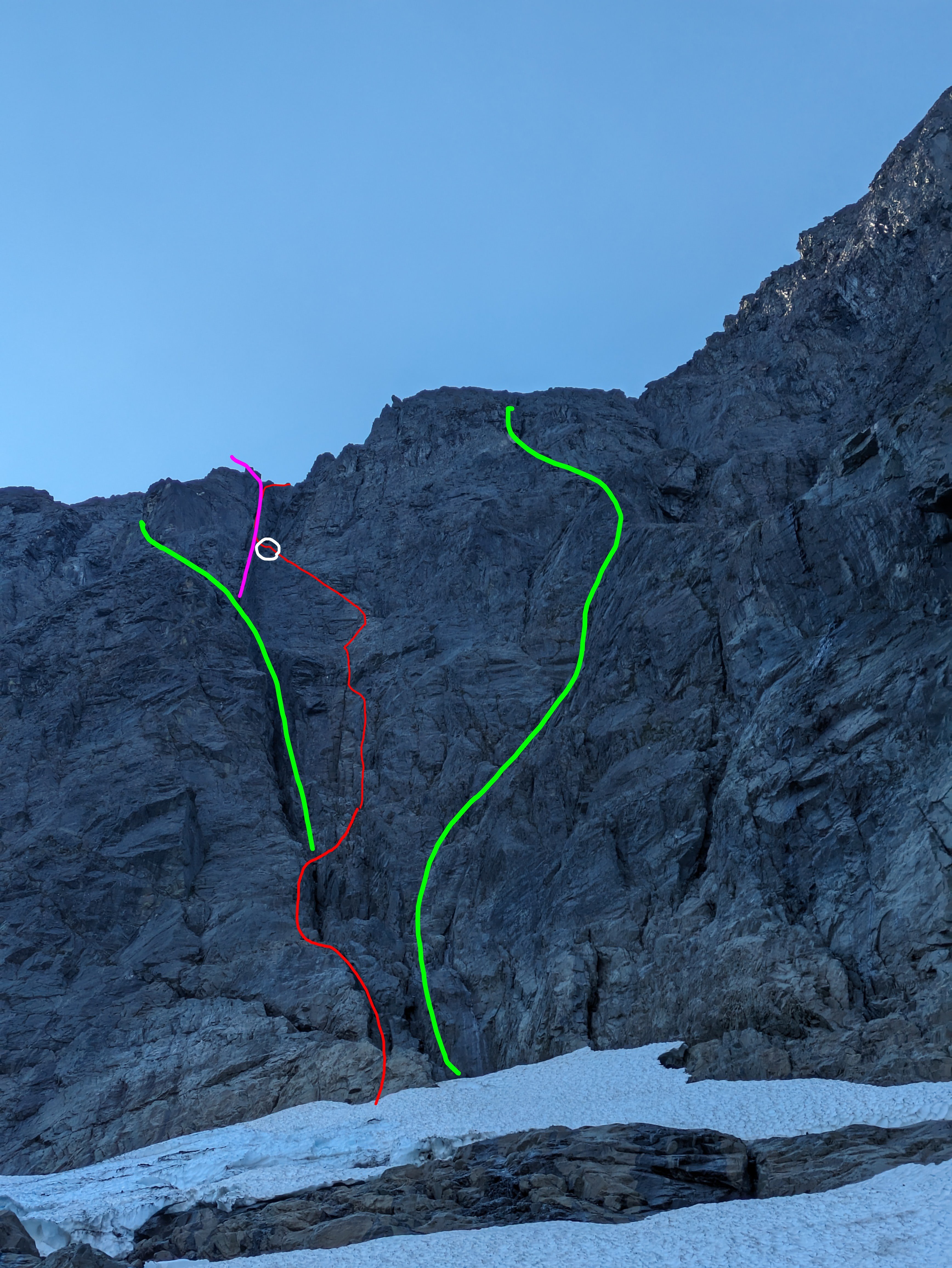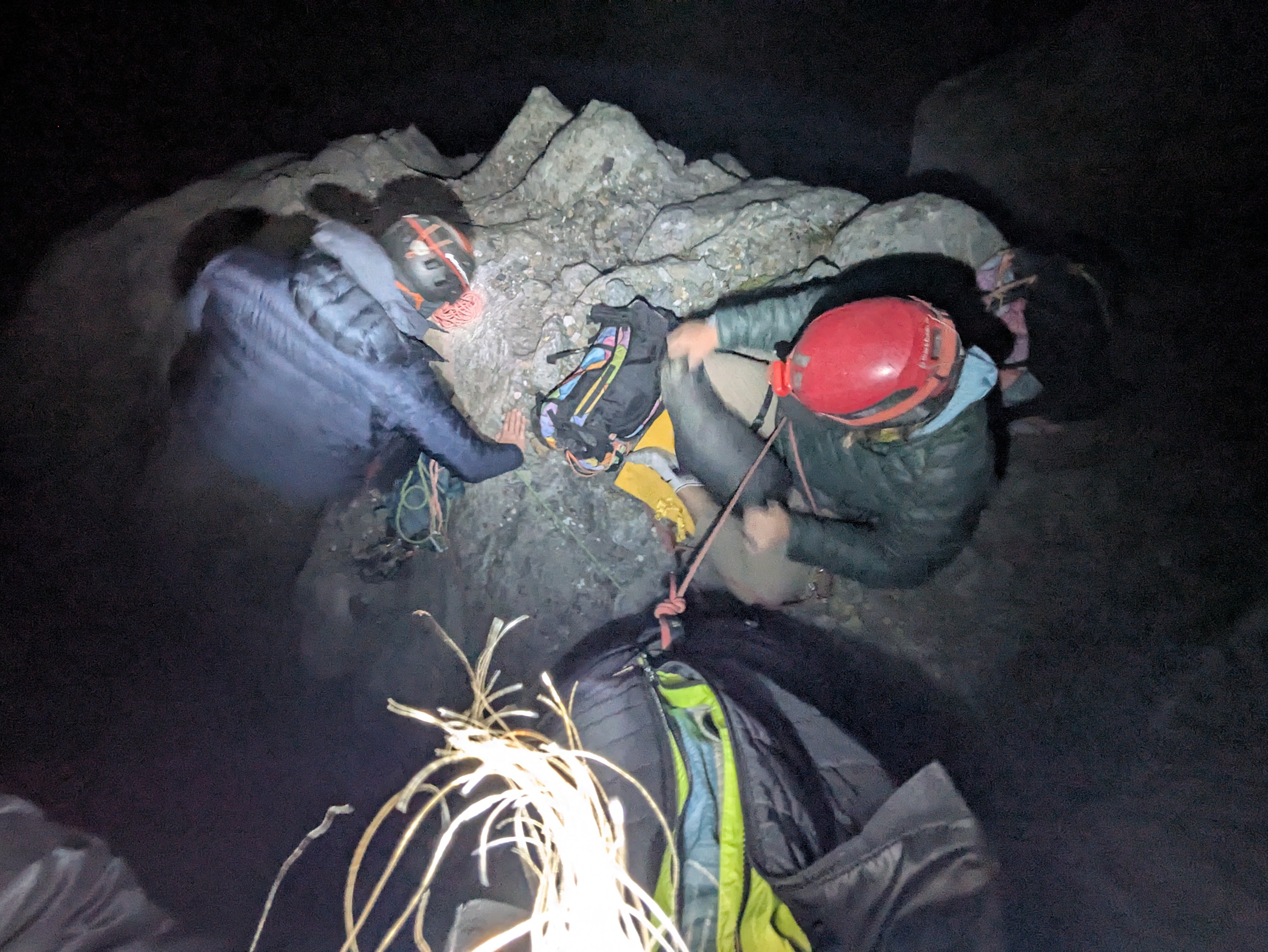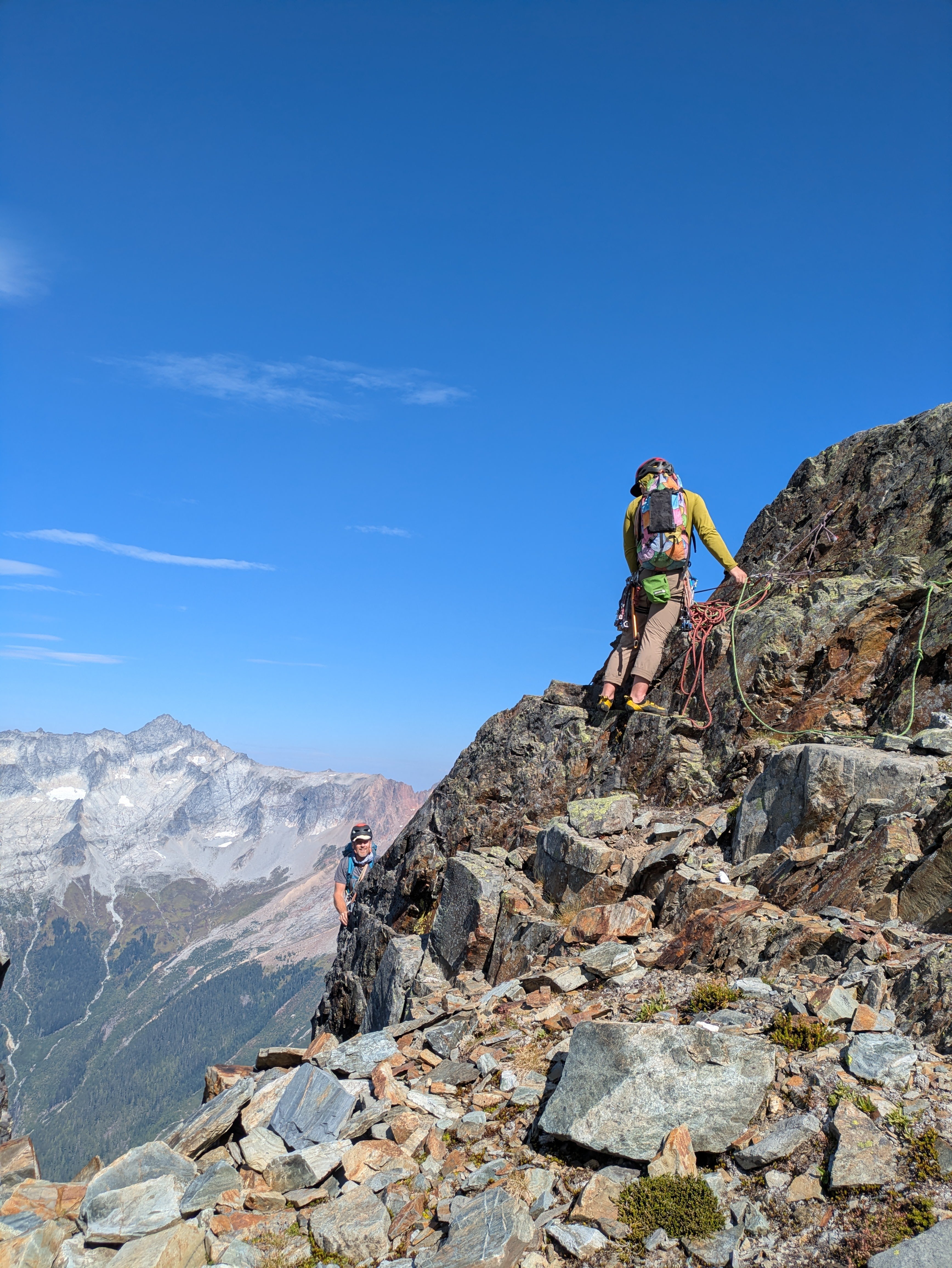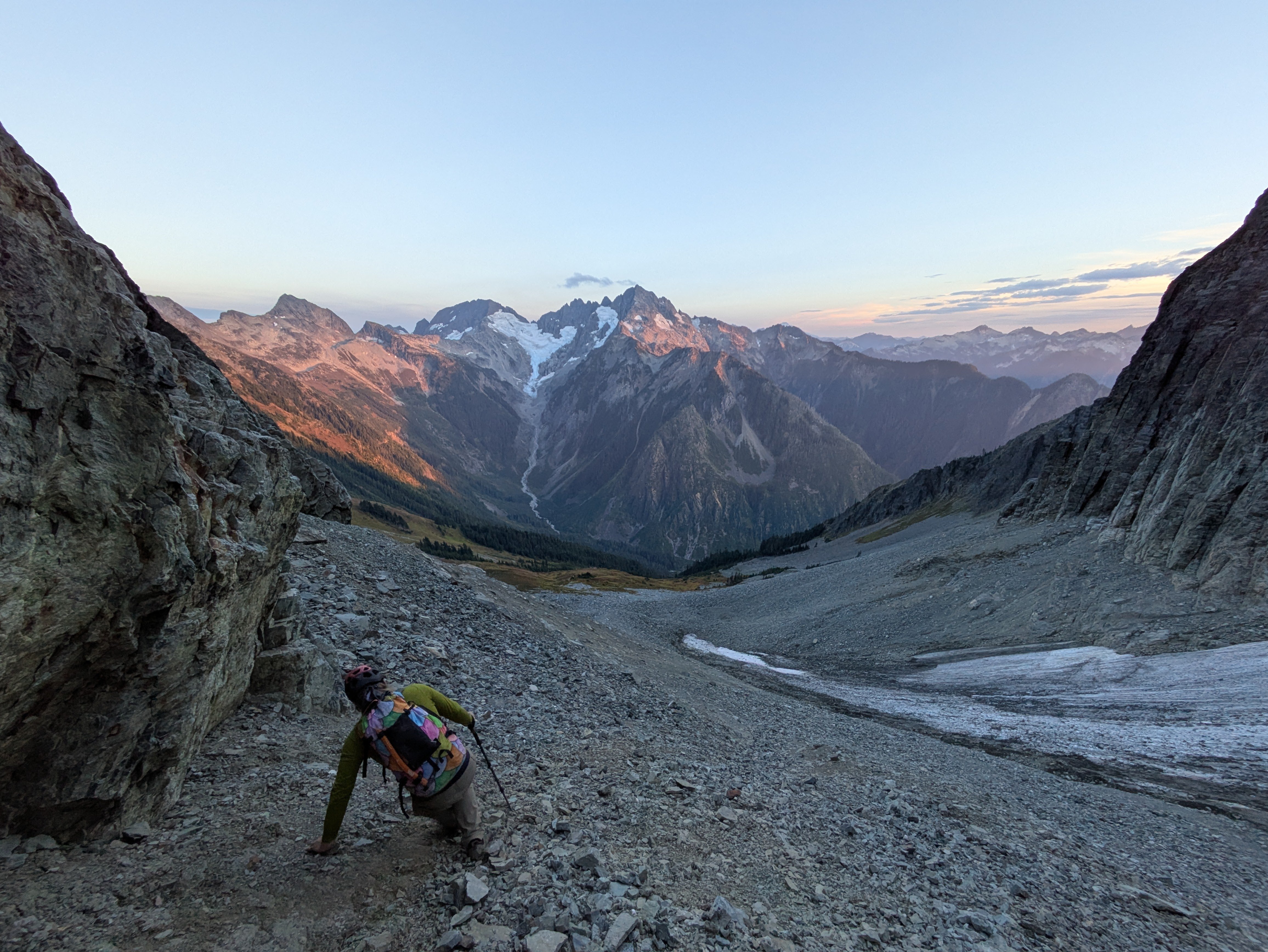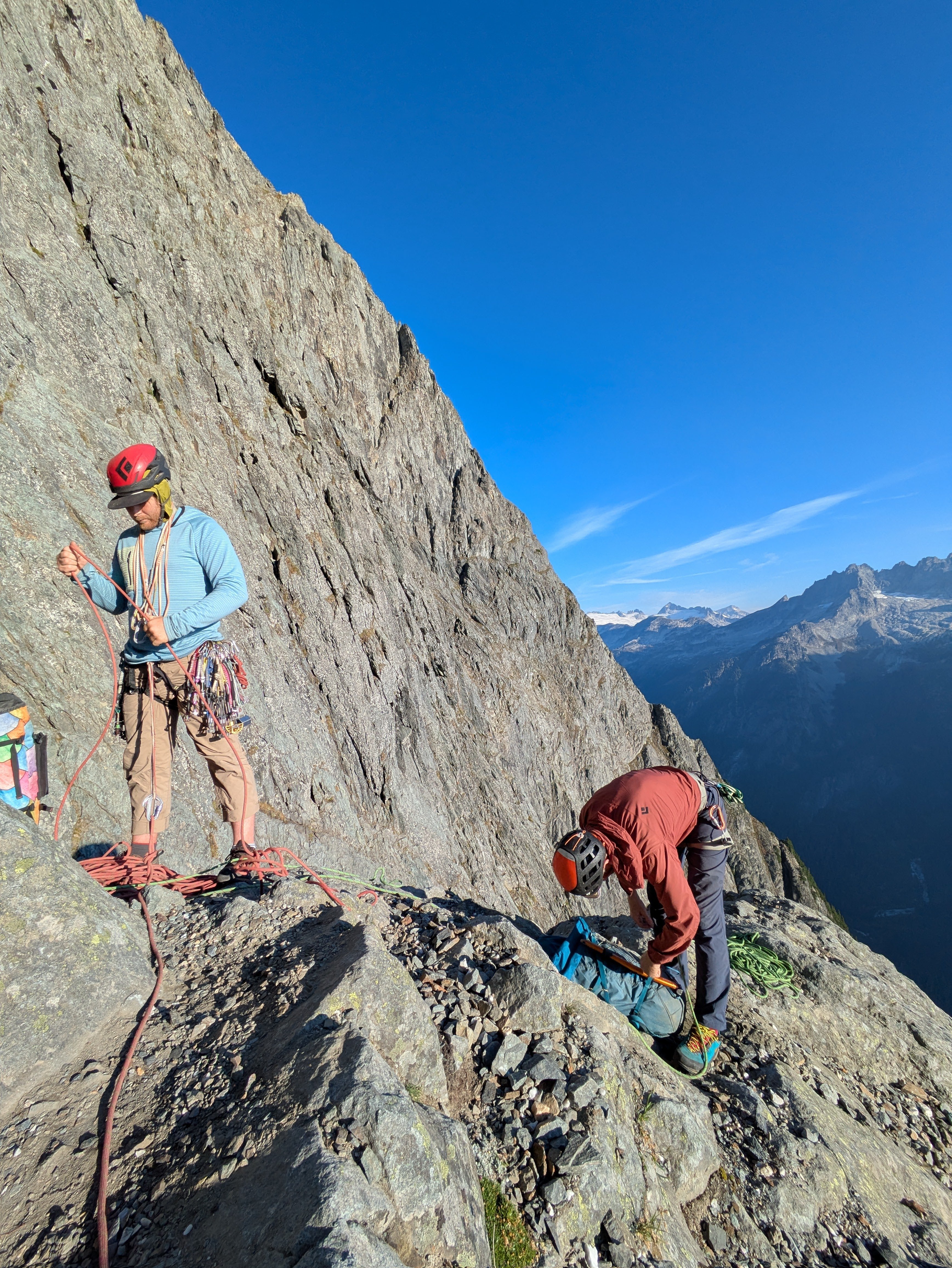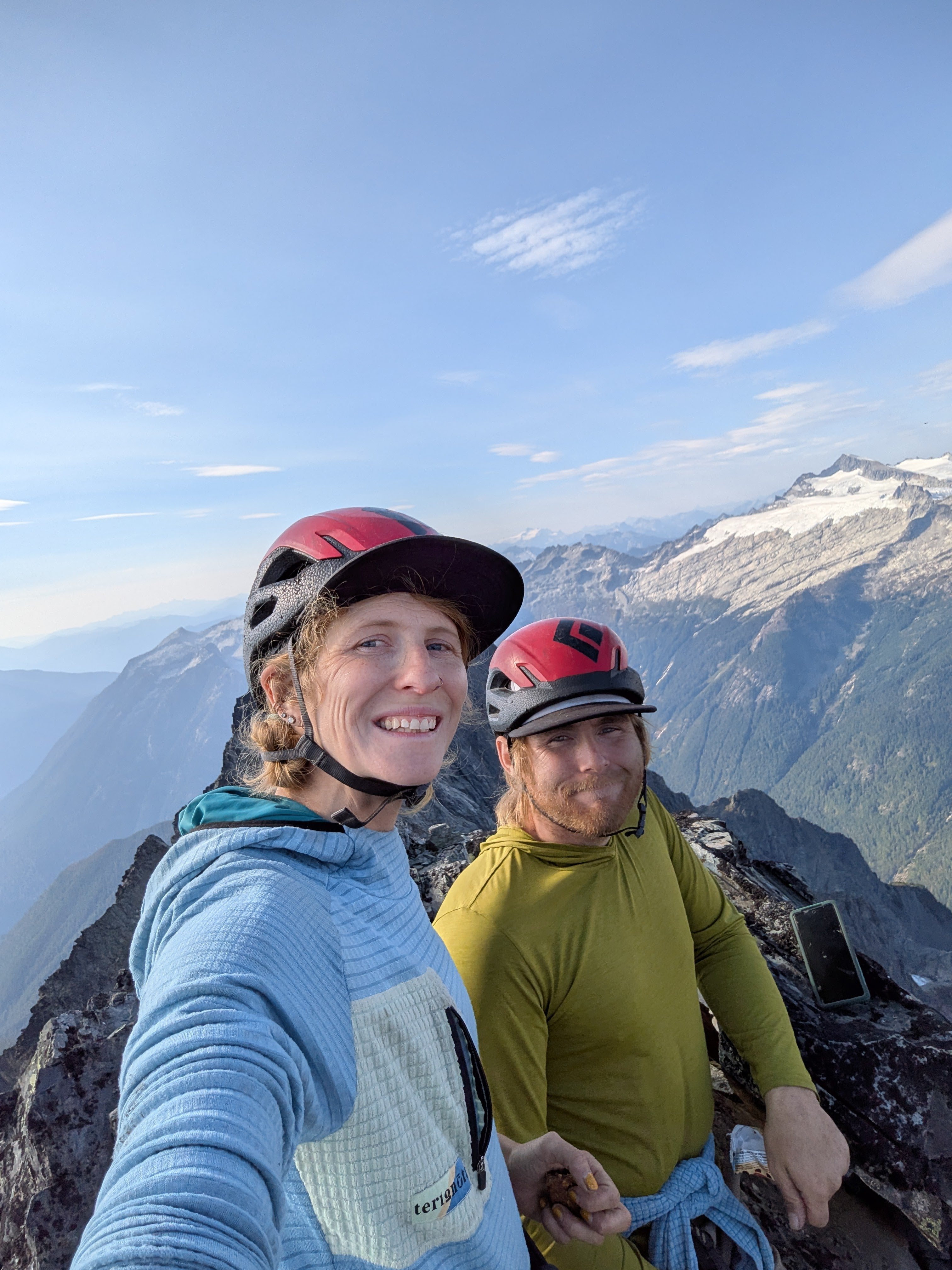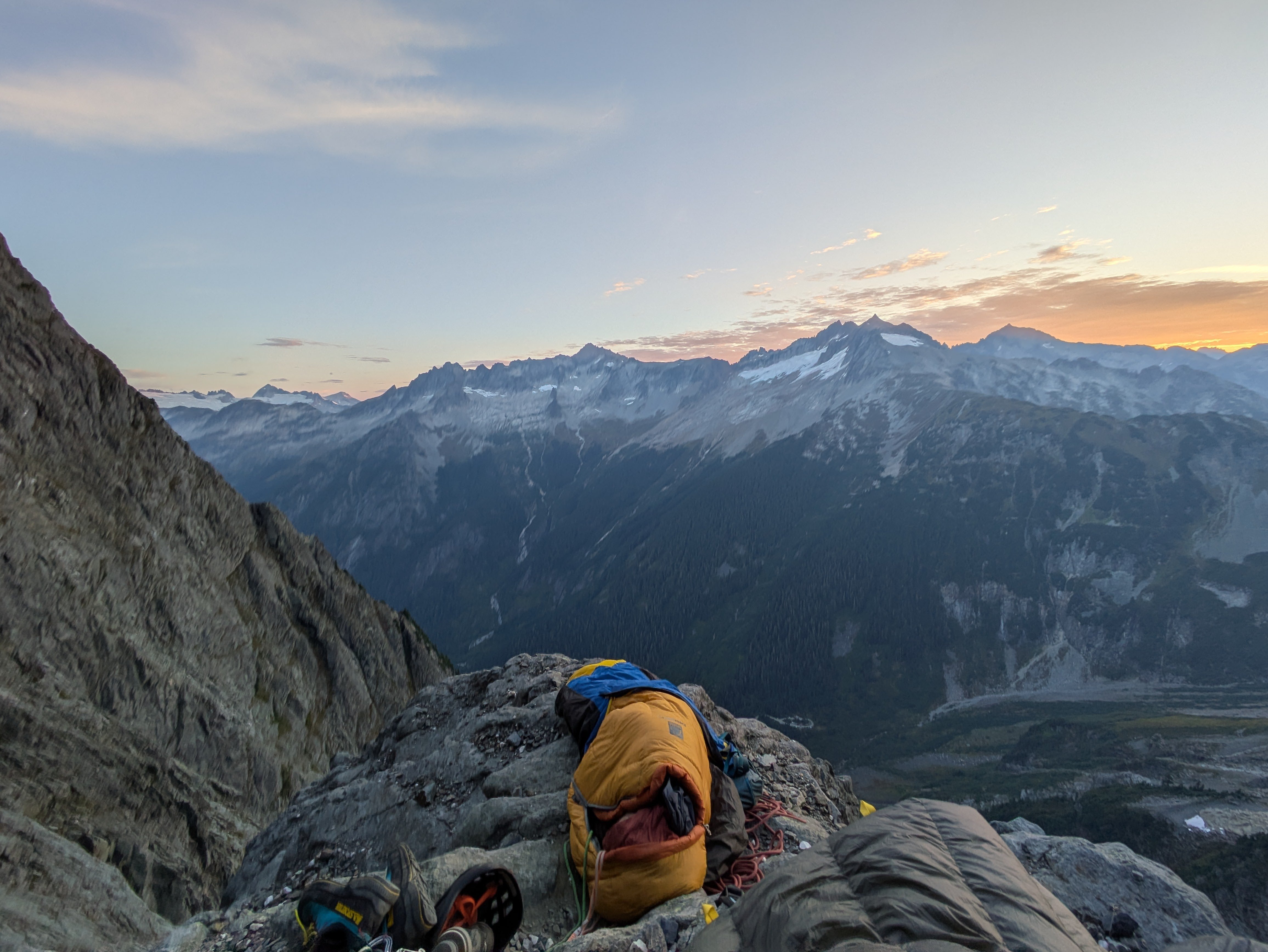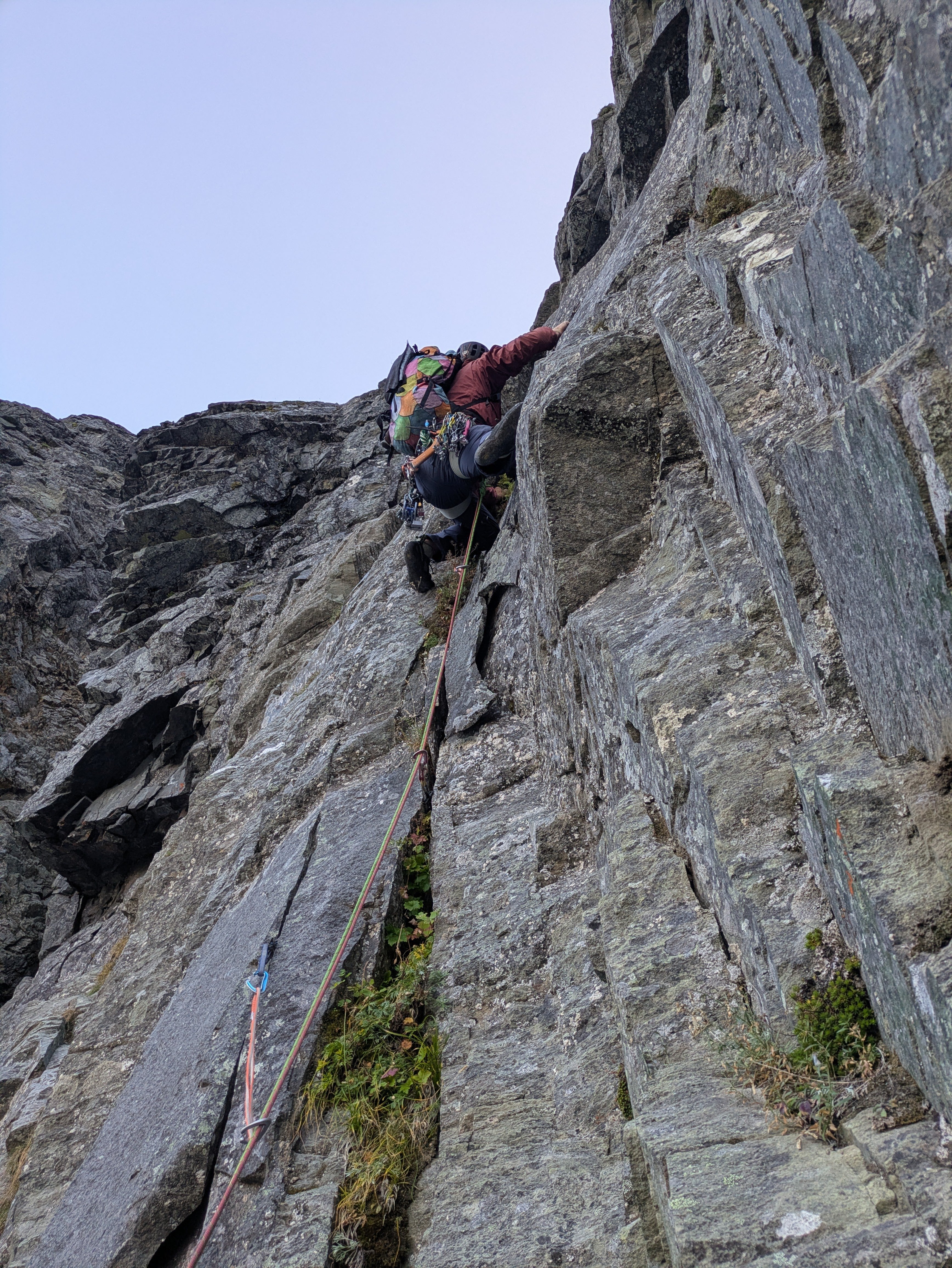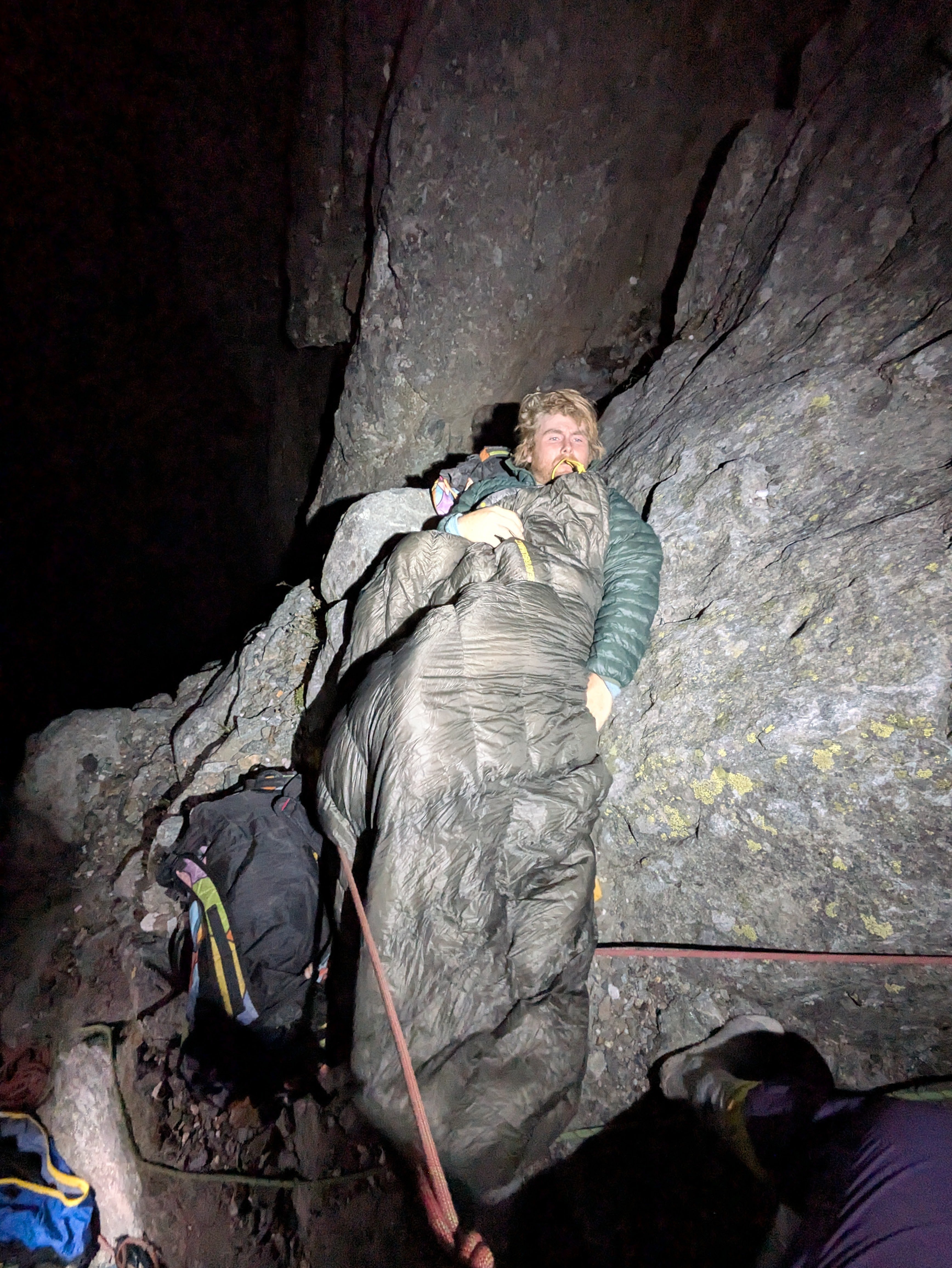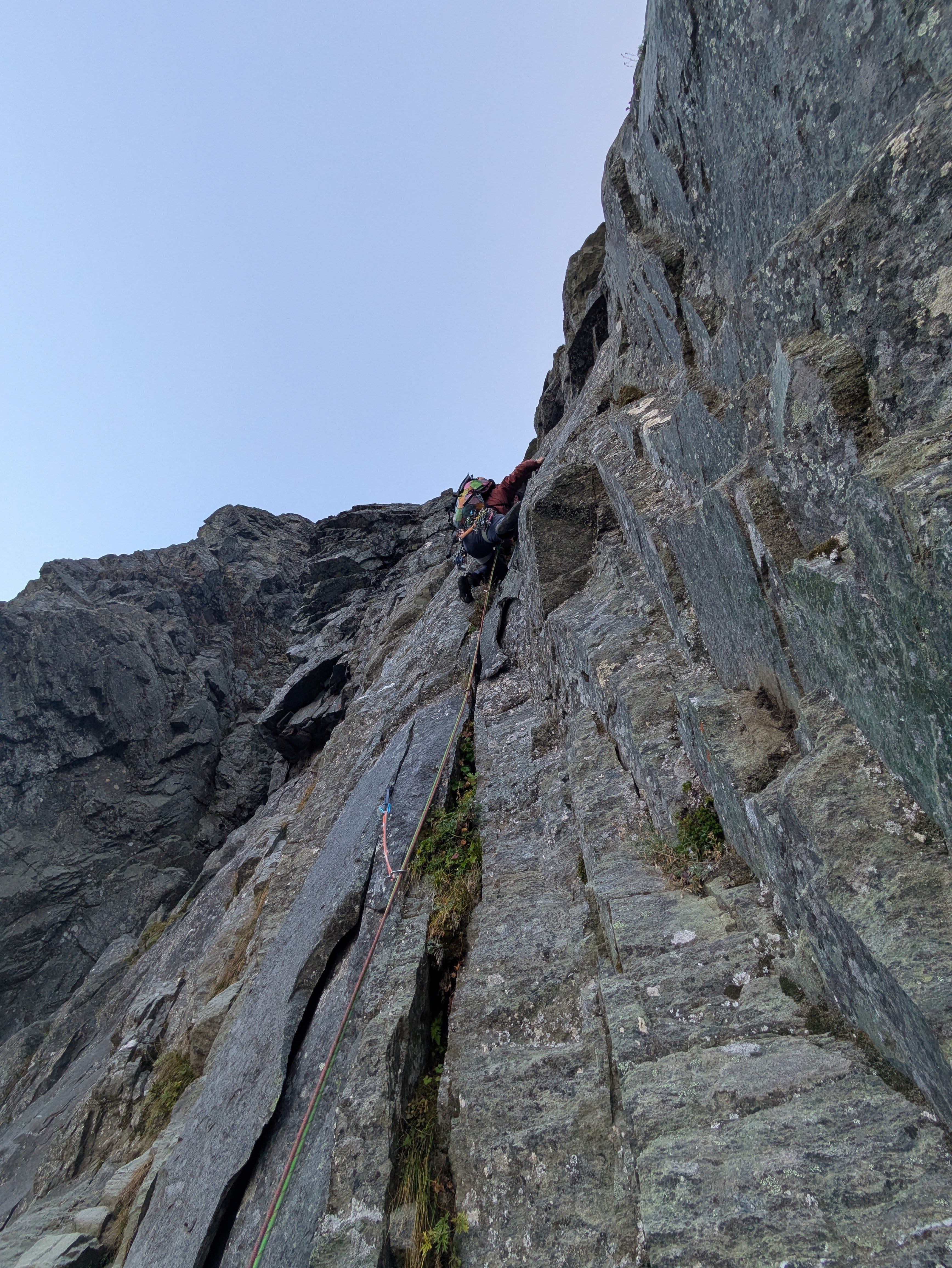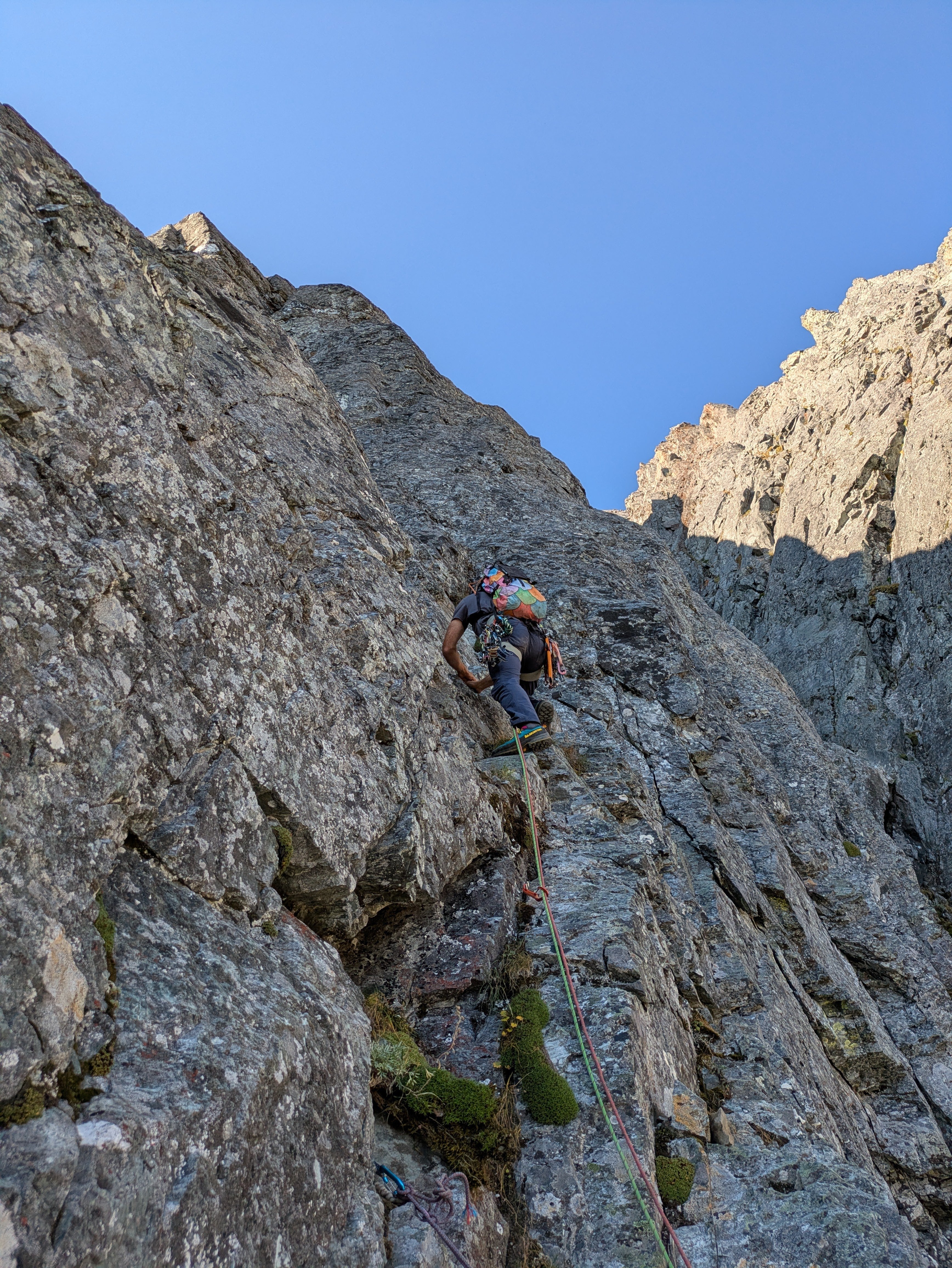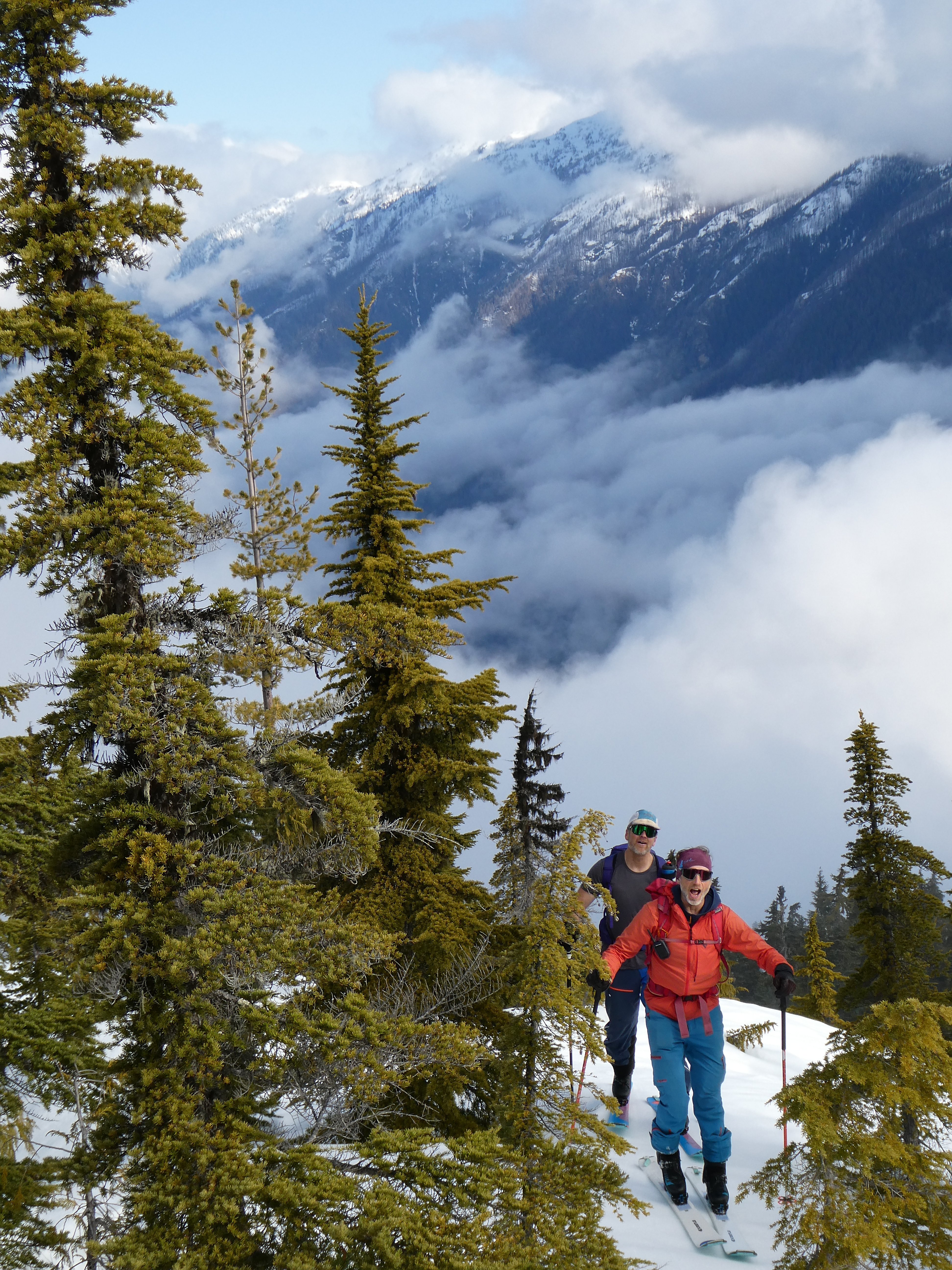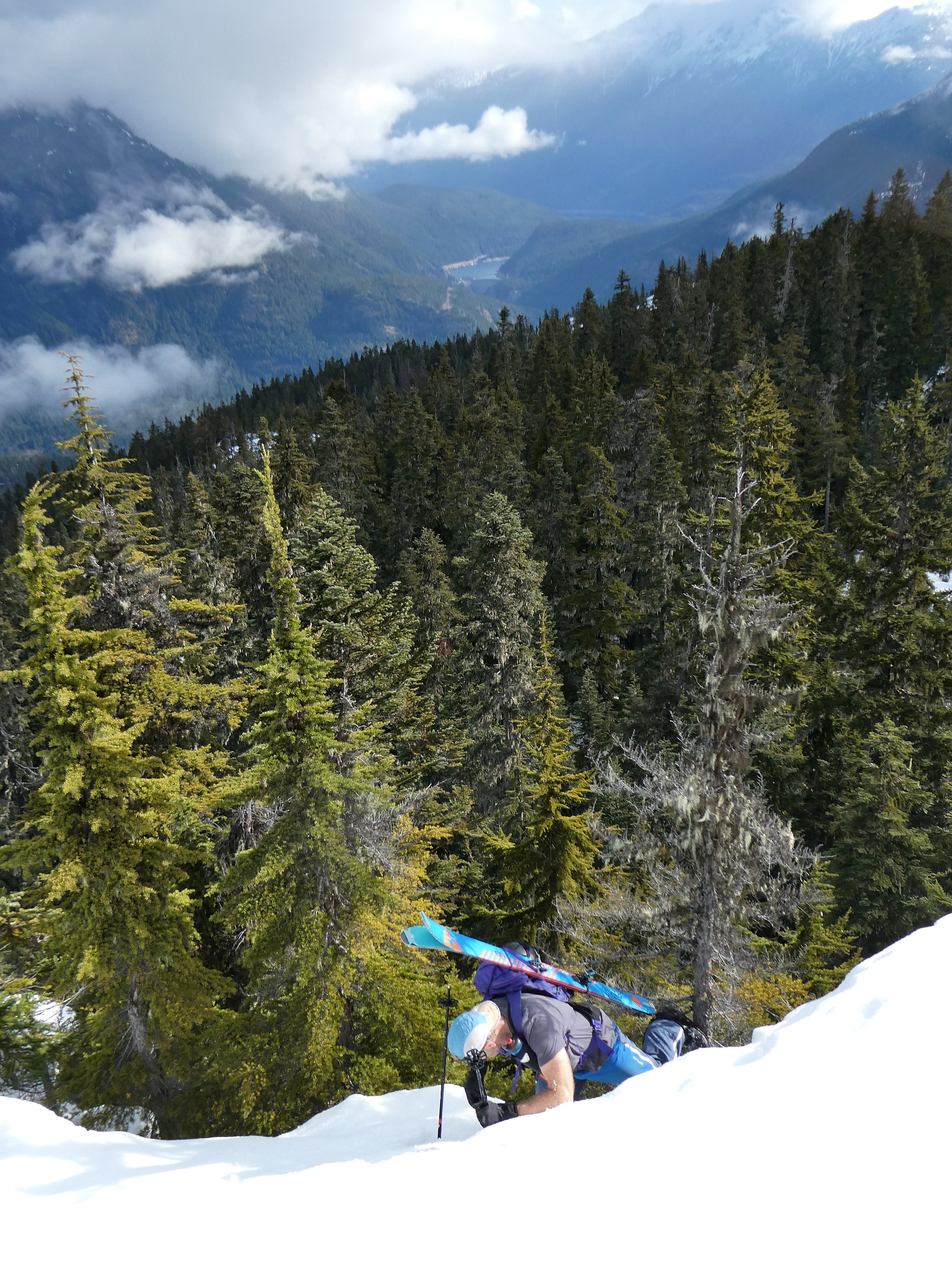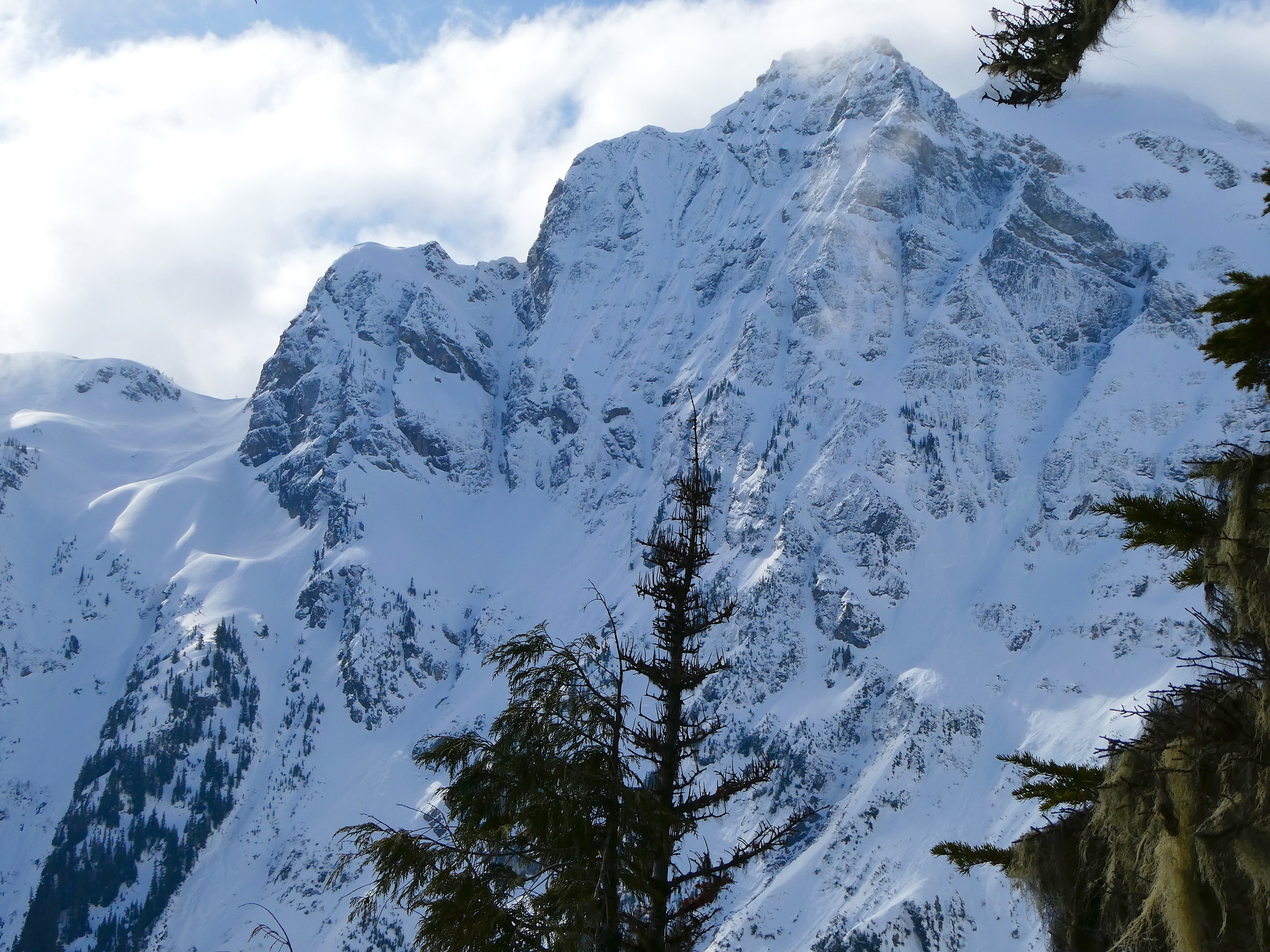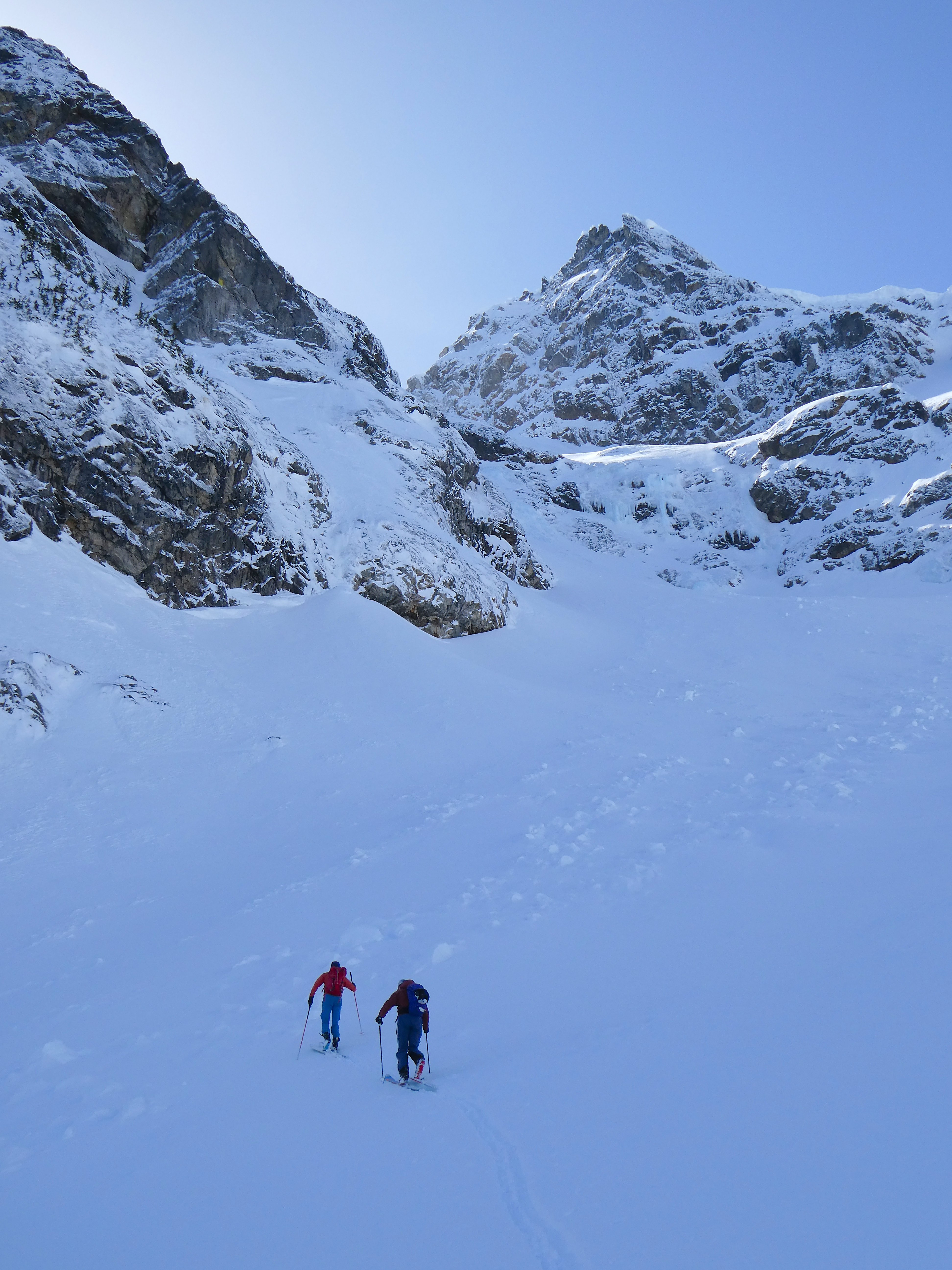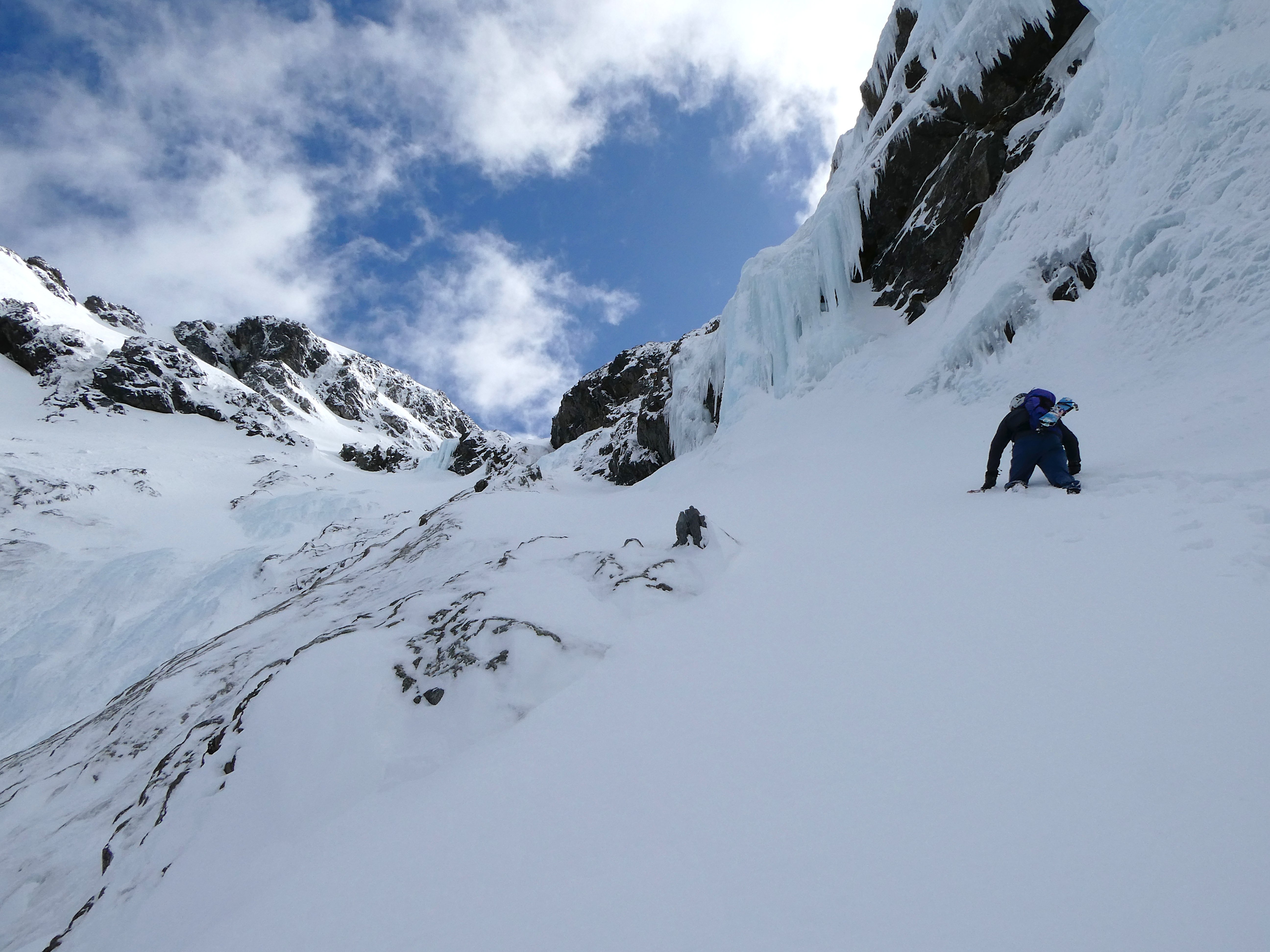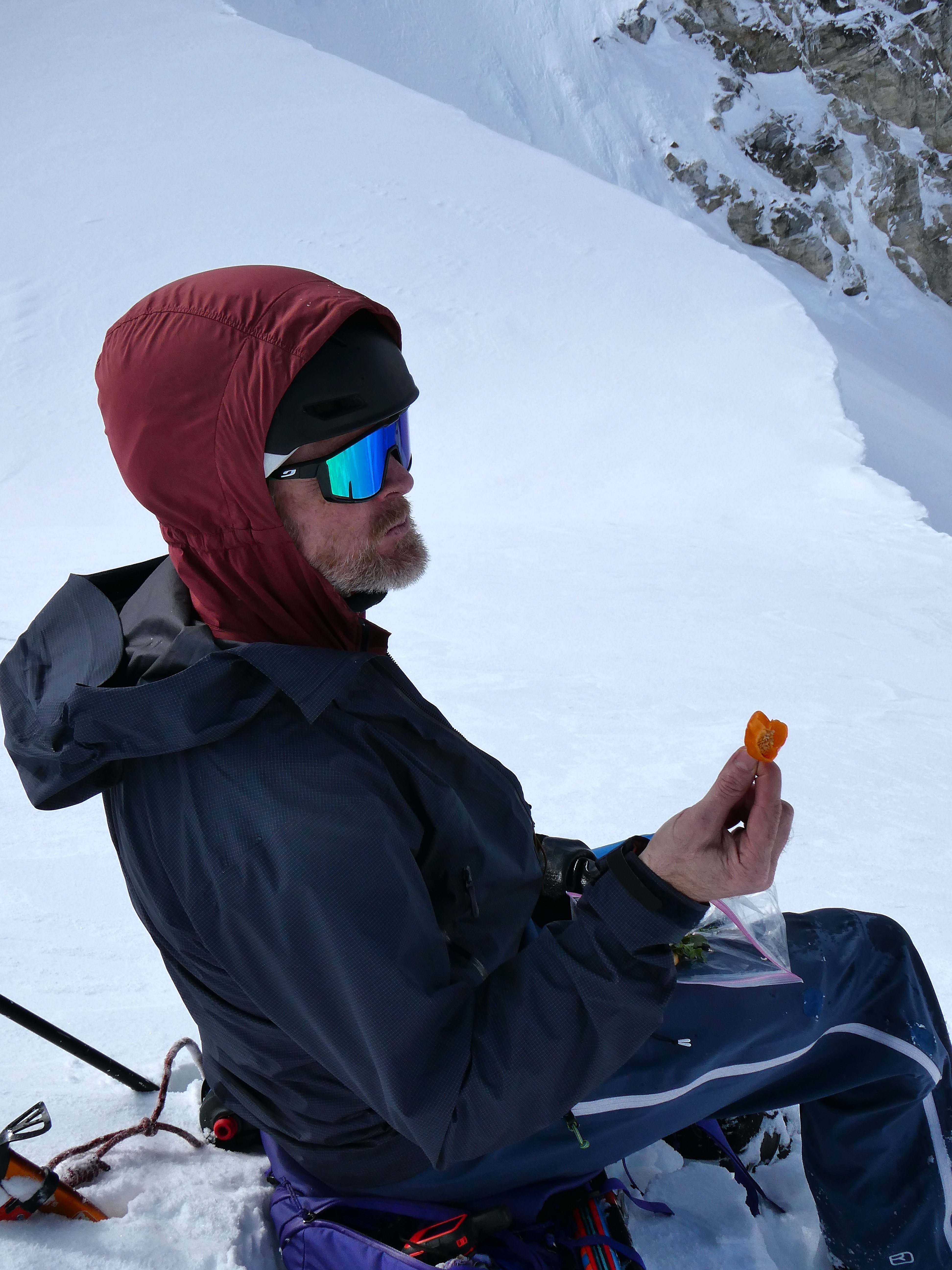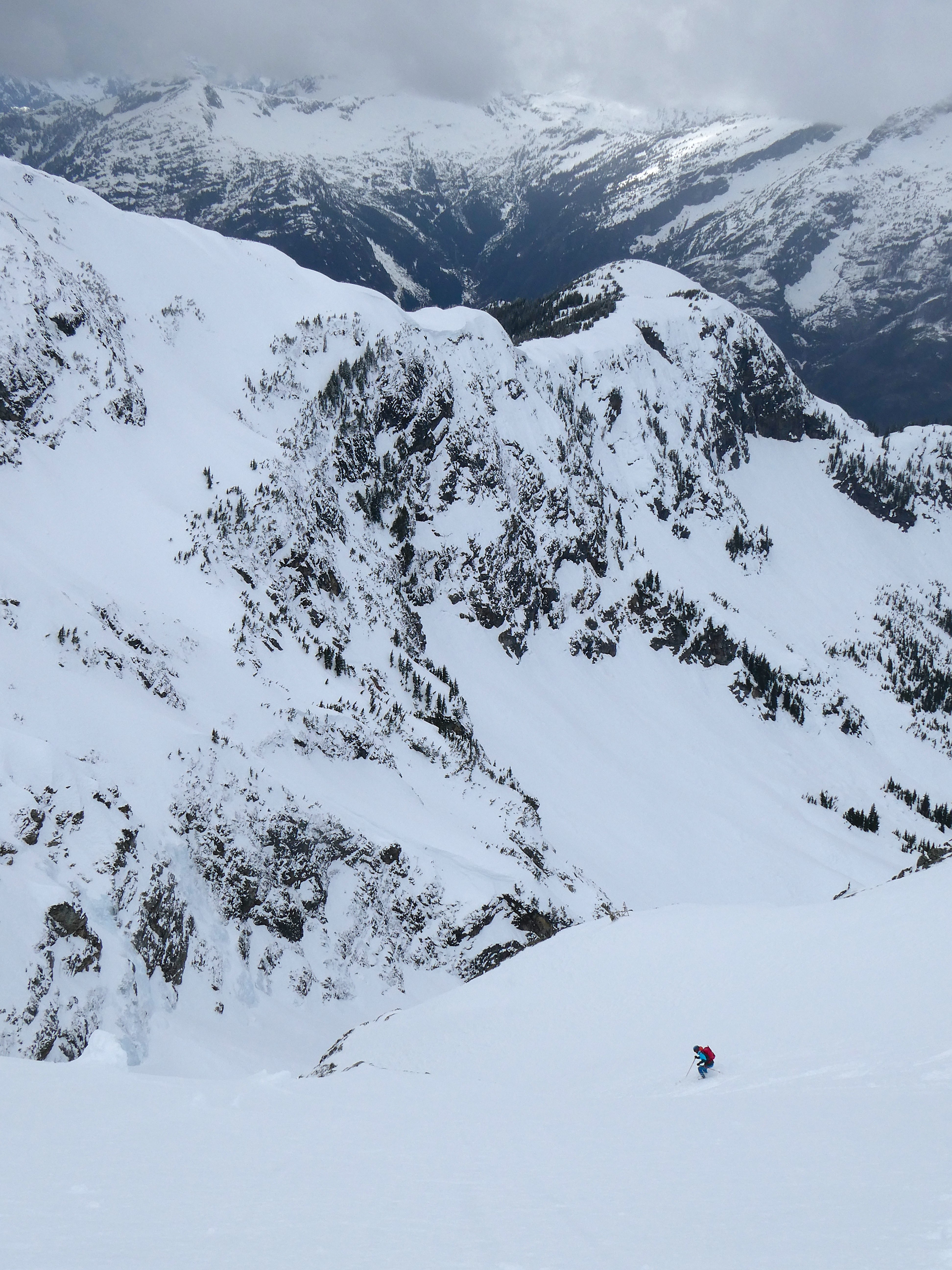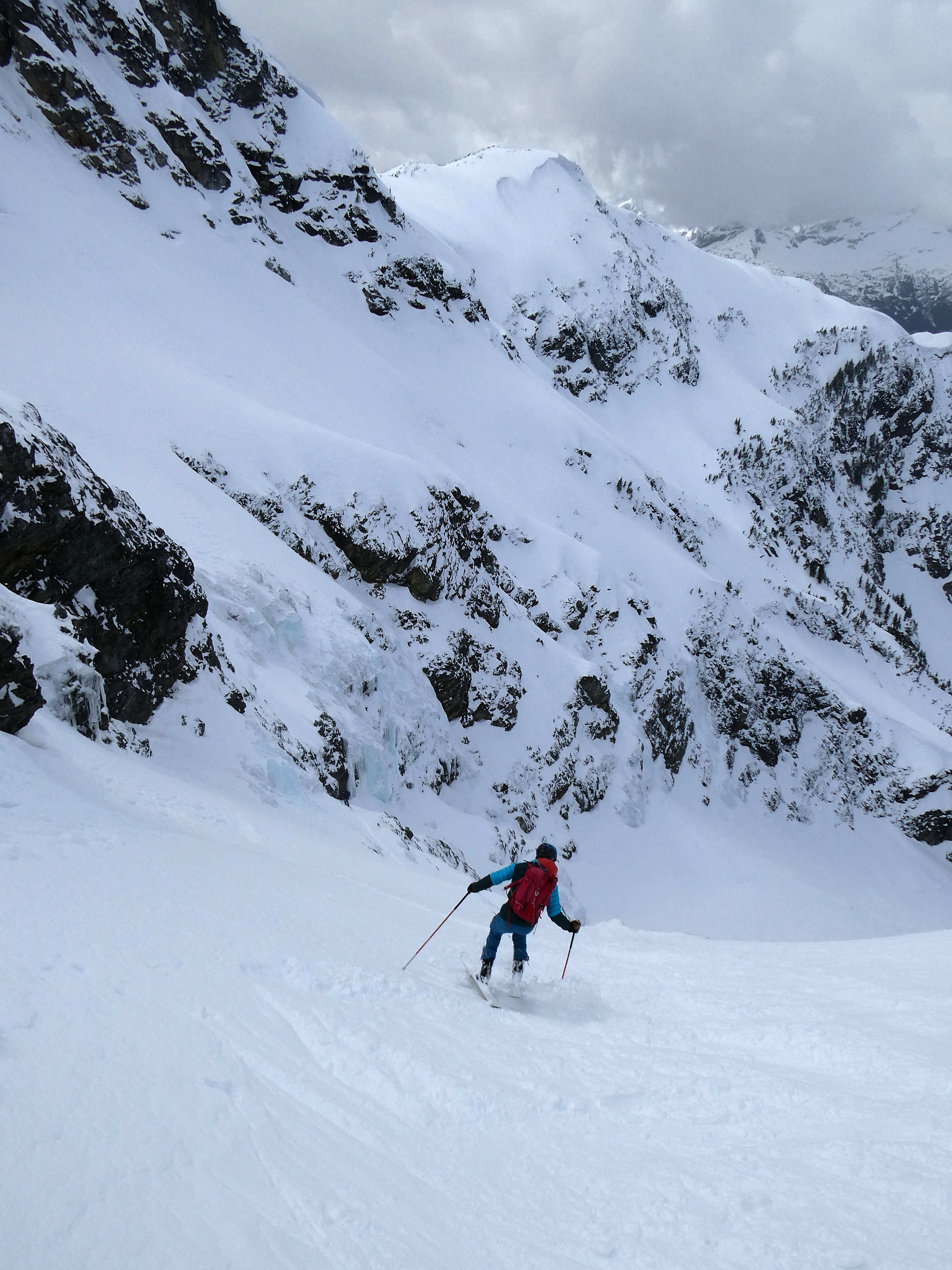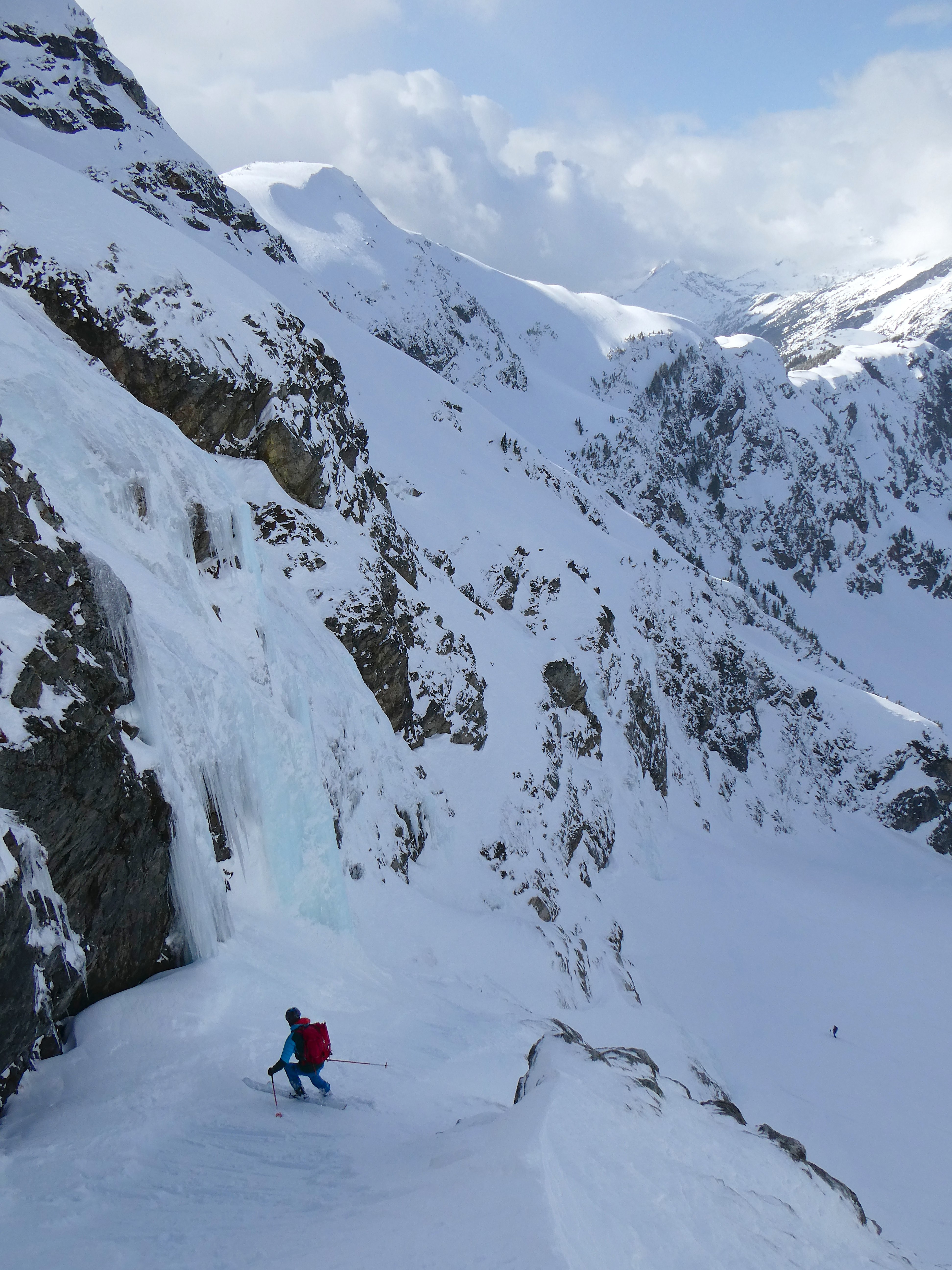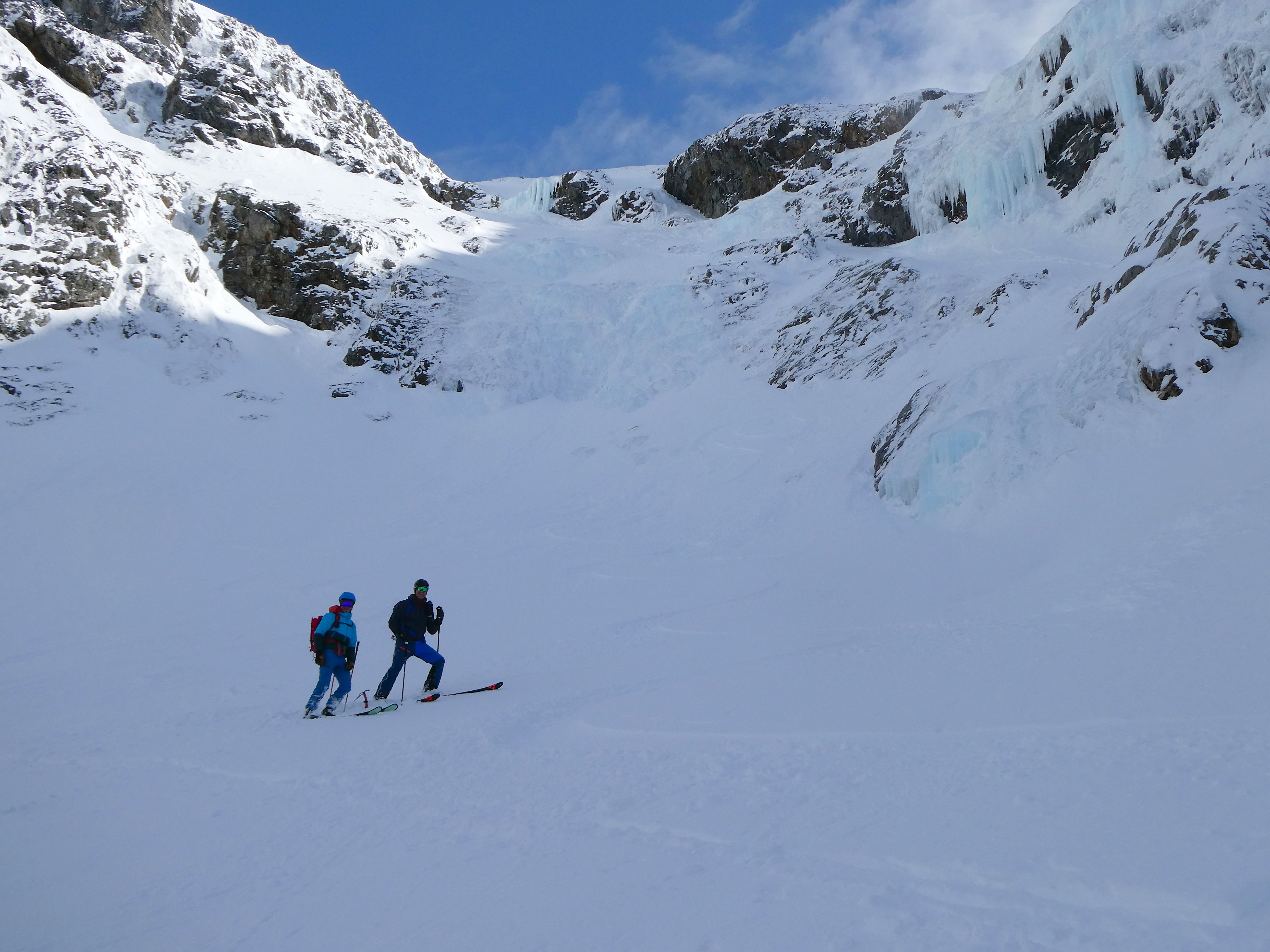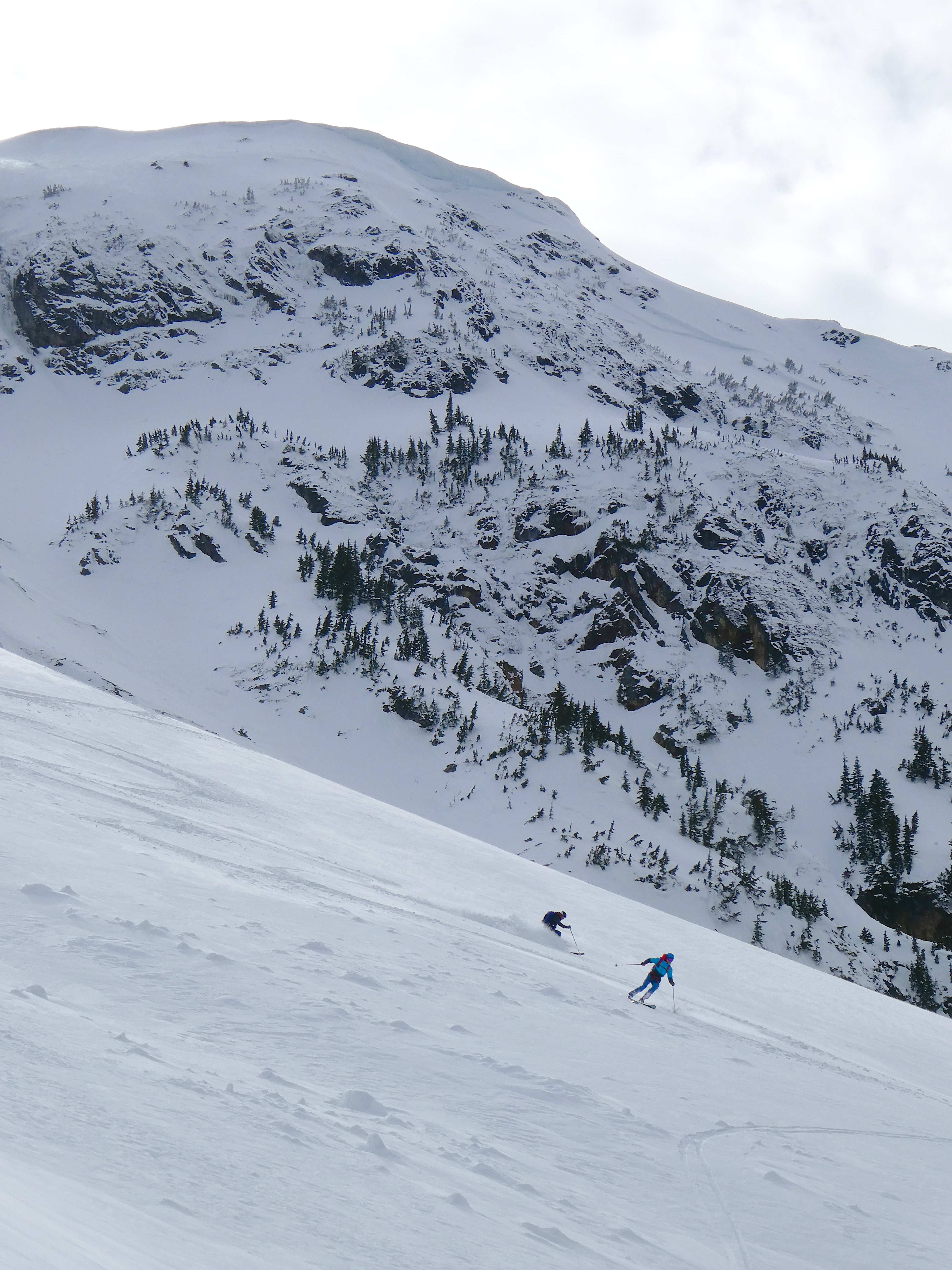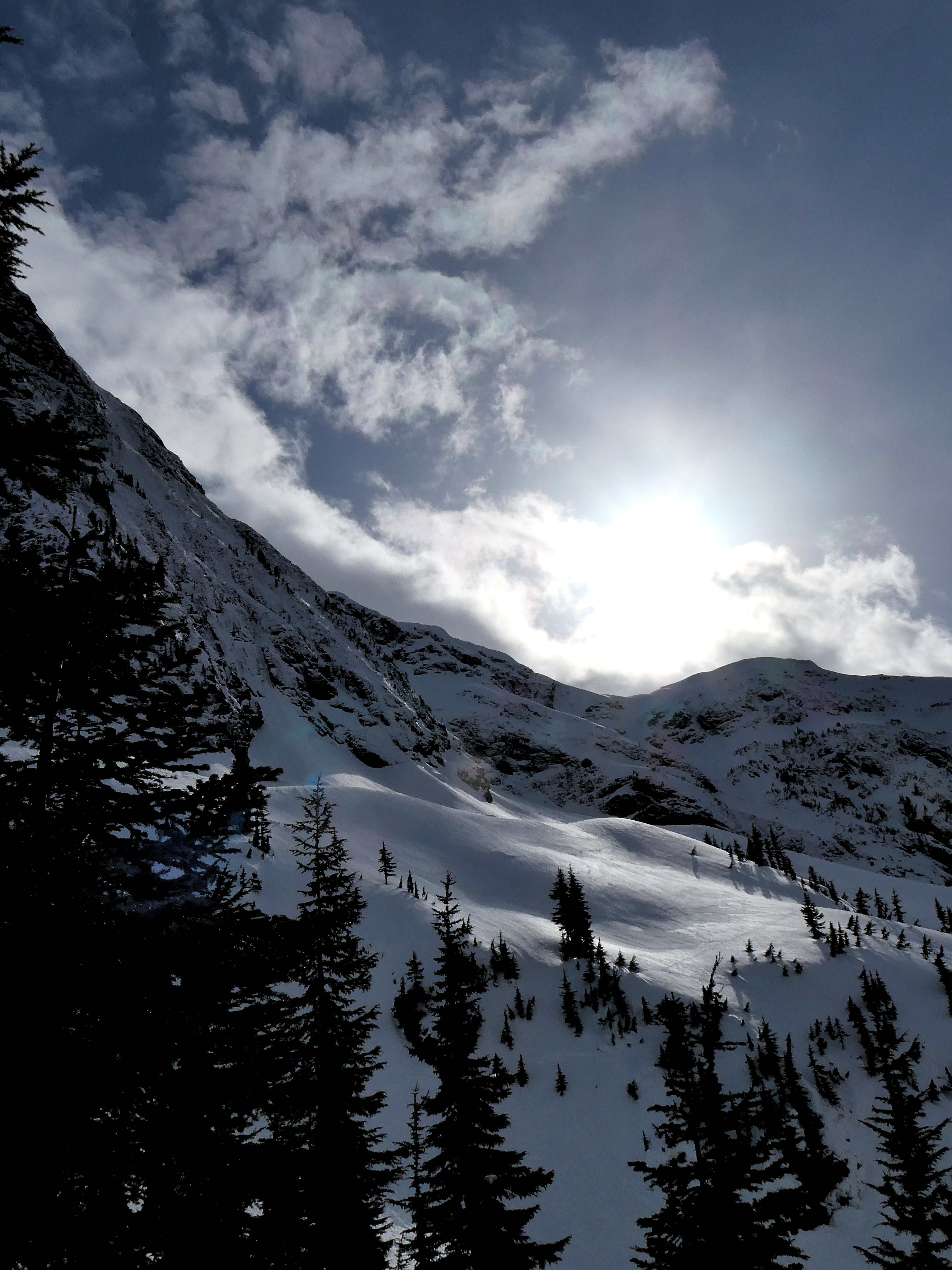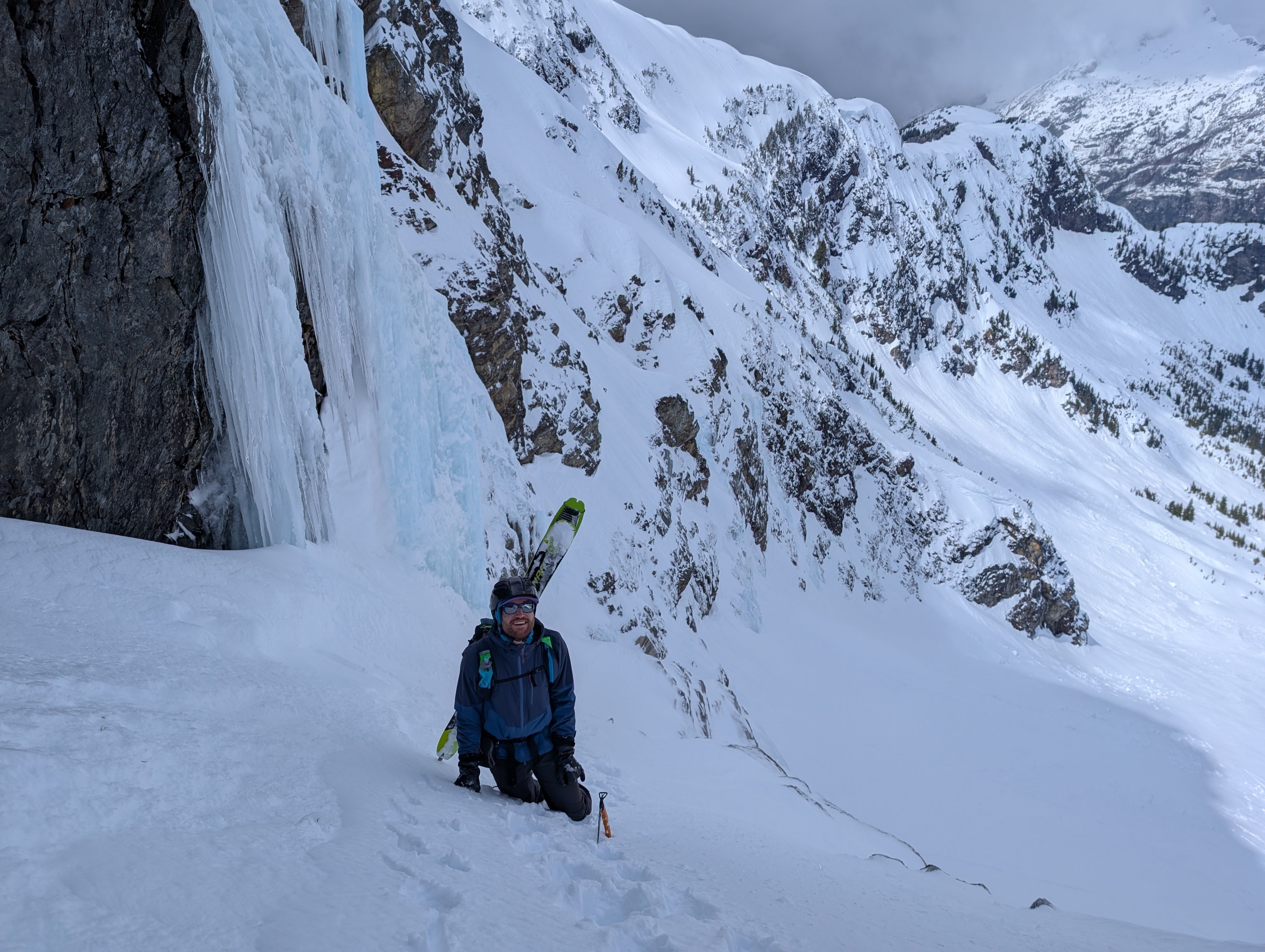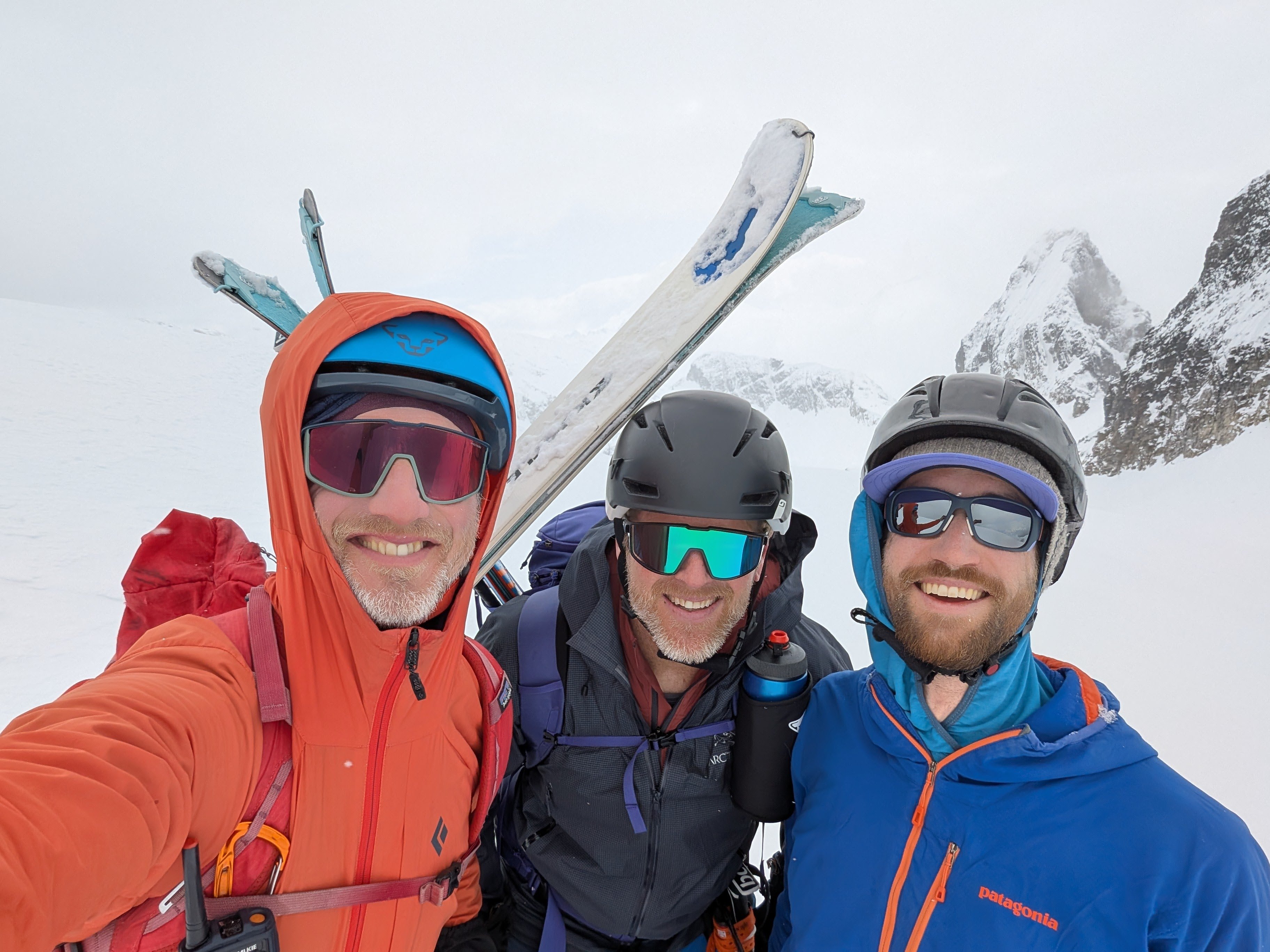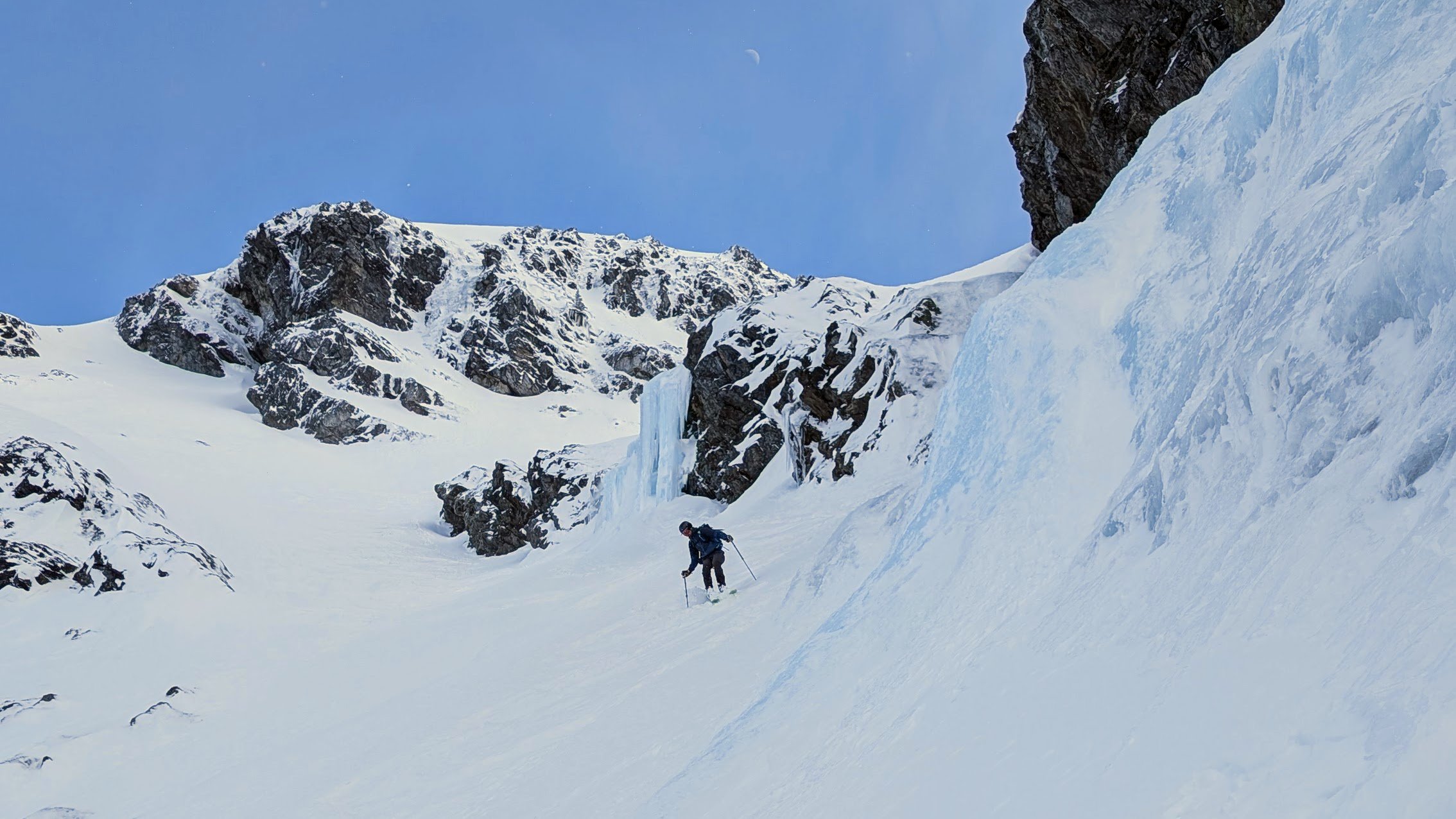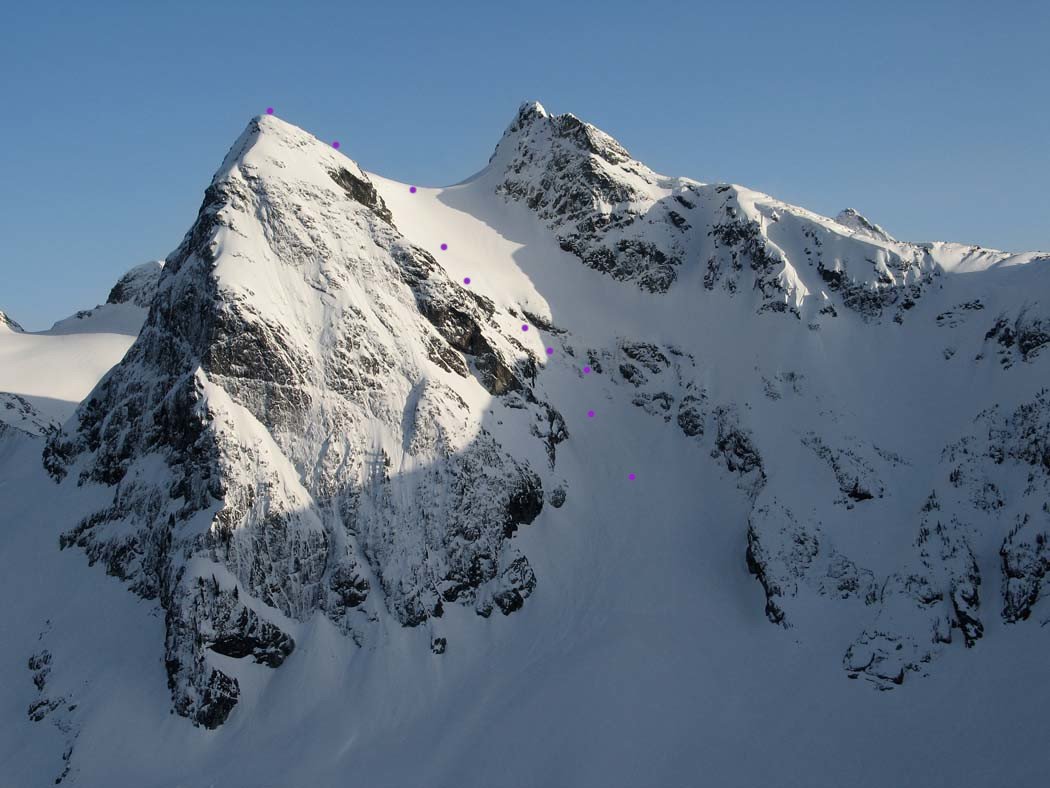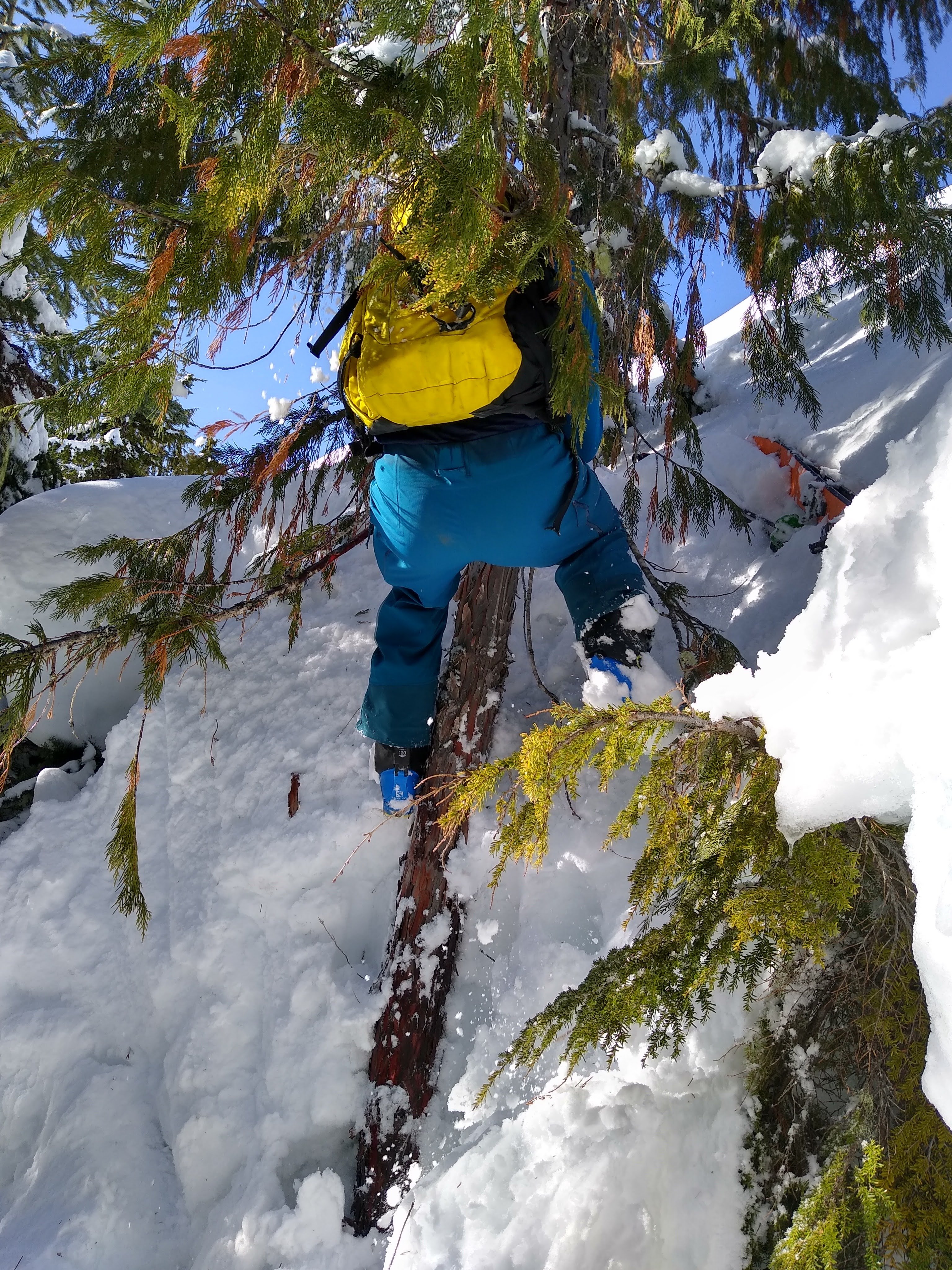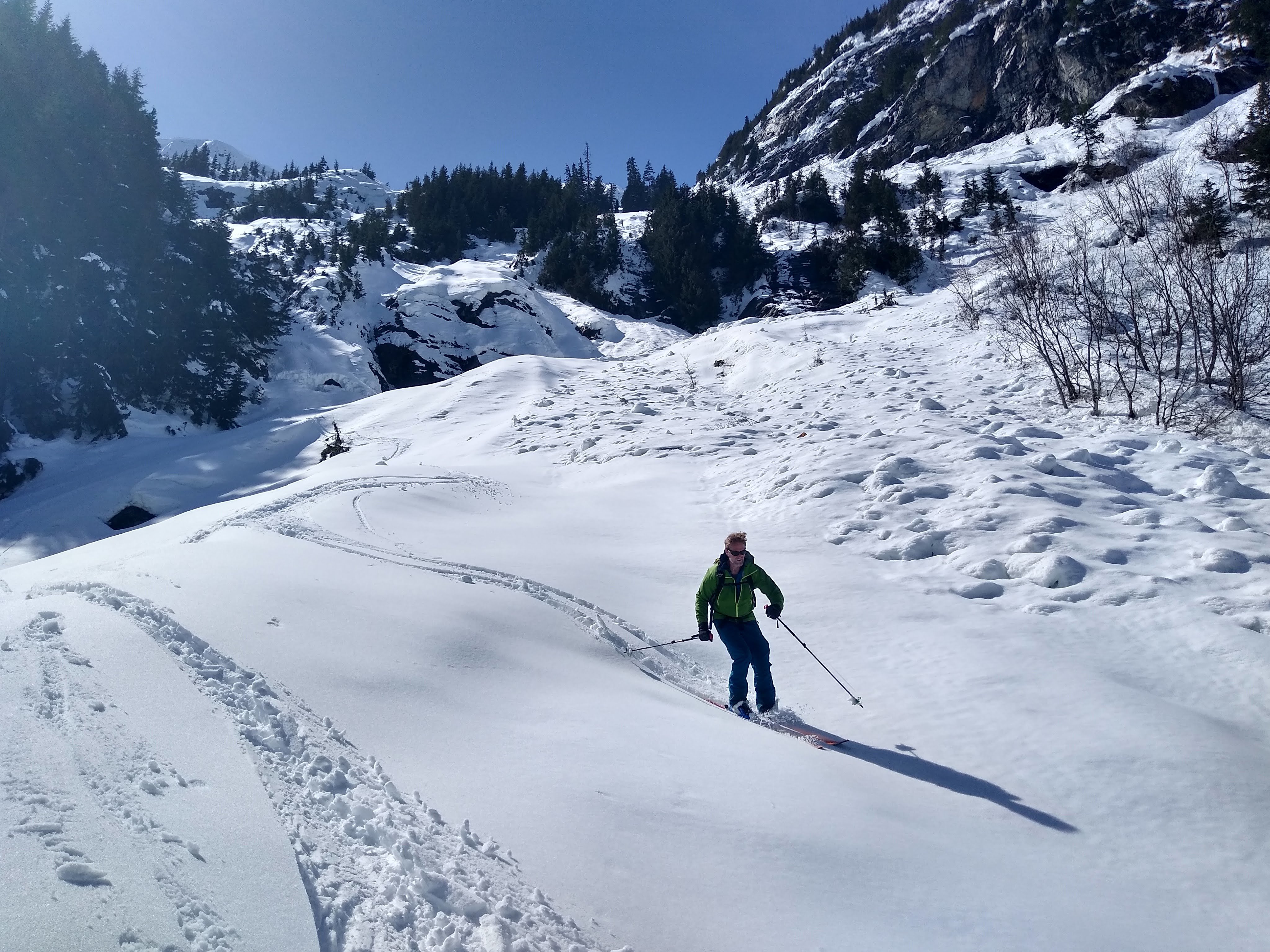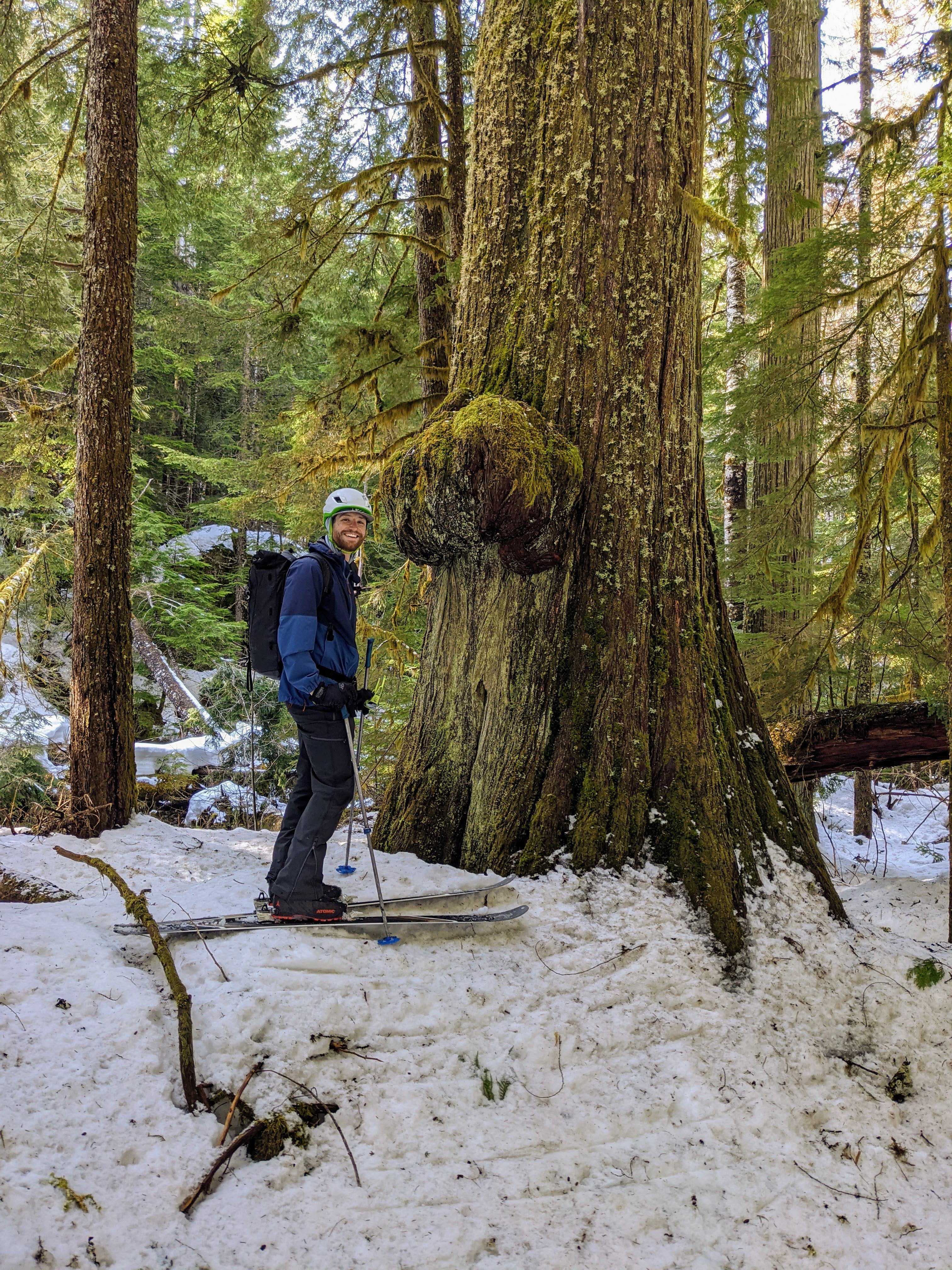Leaderboard
Popular Content
Showing content with the highest reputation on 09/16/25 in Posts
-
Over Sept 12-13 Eric Wehrly, Lani Chapko and I Climbed a new route on the NE face of Johannesburg. Like many features on J-berg, the scope of the NE face is overshadowed by the shear mass of the mountain. The face proper gains over 2000', with the entirety of the north face stretching nearly 5000'. We approached via the start of the NE buttress lines, then up glacial slabs directly under the hanging glacier, eventually climbing over the hanging glacier to access the face. We roped up for 23 pitches, totalling 3900' of belayed travel with 17 hours of climbing time split between two days. Our line of travel up the face Rough overview of the '65 route (left), Route 66 (middle), and the '67 route (right) Closer view of the 3 routes. Pink is where the Becky book shows the 65 route going (sharing a pitch with our line) but the green line is where we believe is more likely they went. The white circle is where we bivied. The forecast on the morning of the 12th showed fog, eventually clearing to blue skies. We opted for a somewhat late start and arrived at the TH to dense white out conditions. Our forecast all seemed to believe it would clear up, so we started hiking down towards the lower buttress hoping it would clear up. Lani going full euro The conditions did pretty quickly start clearing as we arrived at the base, but the rock and, more importantly, plant life was still wet. We decided to access the NE face via the first portion of the NE rib routes, as the CJ was an impassable death gully spitting rocks. The access climbing went generally pretty well, though we ended up unexpectedly roping up for a few pitches. None of us felt like dieing slipping off of wet moss... An early pitch on the approach Eventually we hit the hanging basin where the buttress lines turn right up into the thick cedar forest. We continued up slabs below the hanging glacier and found easy travel. The glacier presented with almost no hangfire this time of year, but early season, this would have the potential for overhead hazard. Lani and Eric on the nice approach slabs Broken ice on the hanging glacier The hanging glacier itself was mellow, though season and conditions will greatly impact this. We ended up chopping a bollard and doing a short rap into the moat at its top to gain access to the rock. Looking back at the bollard belay/rappel Climbing on the second pitch We likely shared some terrain with the 65 route here as we used the gully to access our intended crack system. The Becky topo makes it a little unclear where they went here, though you could probably assume they went up the gully. After a bit of gully travel we were able to escape to our objective face. The angle slowly steepened as we approached our "hand crack". The proposed crack turned out to be filled with gnarly munge, so we aimed for a thinner looking crack to its right. Eric leading the crux 5.10 crack The crack proved to provide the crux of the route, luckily it was relatively well protected... For the crux section. While perched here, a huge natural rockfall ripped down the 65 route gully, validating our concerns of gully trqvel and questioning the sanity of our ancestors. As Eric led the pitch, it became clear that we were about to loose the last bit of light, so we got our our headlamps and prepped for some night climbing to go in search of a ledge to sleep on. Two more 200' pitches gave access to a workable ledge. Lani and I somehow fit in this footprint, while Eric was on some downsloping round ledges below Morning at the bivy Racking up in the morning We all woke up a little creaky and waiting for the sun to warm us. Above presented with 3 options. Our original intent was to traverse right and climb a series of catscratch cracks. These however looked steep, and filled with munge. So we opted to work up and left to climb the top of a ridge feature (not even considering option 3, the unclimbed gully above). Its possible we share a pitch here with the 65 line, though the written description of their climb makes much more sense to have climbed an obvious ramp a couple hundred feet below (avoiding what would have been a gnarly mandatory impasse to gain their upper headwall cracks). Lani topping out the worst pitch on the route... A fun corner brought us near the ridge crest, where we climbed 2 awful choss pitches up to a gendarme, above here, the rock luckily turned back to decent quality shist. Eric starting up his choss ridge pitch Climbing on the pitch above the red gendarme Here we worked up and right on moderate terrain and eventually gained access to another big gully system that we believed to be the 67 line. We climbed this gully for 2 shared pitches to gain a notch on the NE buttress by the glacier. The final moves on the NE face Different view, same spot One mellow ice pitch brought us into some more easy scrambling to the summit. We all had approach shoes and aluminum crampons so ended up roping up for 3 total pitches of easy ice. Had we had boots or had early season snow coverage over the ice we likely wouldn't have needed to rope up for these pitches. Then we were in for the long descent down the East ridge and back over Doug's direct. Steep moraine dirt below the CJ We ended up getting back to the cars pretty late and made the rough late night drive home. Overall, the route only really had a couple pitches of bad rock. There were some tricky belays to build and some pitches were runout. Though very rarely was it hard and runout. It seems like the objectively safest route on the central part of the NE face as it climbs the least amount of gully of any existing route. We collectively give it a solid recommendation for the Cascades connesouir, or anyone keen on climbing the upper NE face. As always, here are my pitch notes.. Route 66 V 5.10 AI 2 Rack: Triples .3/.4; Doubles .1-.75; singles 1-3; full set of nuts; 3 KBs (used extensively for belays) P1-4 700' Alpine boulder problem pitches getting to the base of the NE face (up to 5.8 and AI2) P5 130' 5.7 A transition pitch up into the gully. P6 200' 5.6 Climb the gully, belay in the gully. P7 200' 5.9 Climb the rib left of the gully, stepping back right to belay in the gully again. P8 150' 5.6 Exit the gully to the right. Belay on a good, medium sized ledge below where the wall steepens. P9 100' 5.10- start with a steep, juggy roof to the right, then trend up ramps to a small ledge to the right of a large tombstone flake. P10 200' 5.10 Start up the flake (crux), then trend left on low angle terrain to meet the main weakness. Follow this up to a large ledge system. P11 200' 5.6 Traverse slabs rightward into a gully, follow it to a good ledge below a big roof P12 200' 5.8 "money pitch" Follow the gully, pulling the roof to its left, and continuing to another good ledge P13 250' 5.4 Scramble up the gully, exit left and belay at a ledge positioned below a big open book corner. P14 160' 5.9 Work your way into the corner, belay at its top. P15 170' 5.6 Ramble up loose terrain on the ridge crest P16 100' 5.8 Climb the super chossy ridge to a notch by a red finger P17 200' 5.5 Climb past the finger then scramble up to your end of rope P18 200' 5.8 Climb the grassy cracks above to gain the big chimney on the right, follow this to a stance in the chimney P19 200' 5.6 Trend up and right past two gullys towards the larger drainage feature P20 150' 5.9 Climb a face to gain a corner, follow this to a ledge at its top P21 200' 5.7 Continue up the gully P22 200' 5.7 Continue up the gully, belay at a notch on the NE butt by the glacier P23 200' AI2 one pitch up the glacier.6 points
-
And yes, like others, I have often looked up at that wall and wondered. Thanks for surviving to bring back the first report to the internet era!2 points
-
Don't worry @lunger some hippy pow with JGAP is just a few months away. Just what the doctor ordered.2 points
-
Nice write-up, Sam. Overcoming the myriad challenges with you two sure was fun. Being up on that wall made me feel small. Reflecting on climbing this and Little J-berg the same summer, a couple things come to mind: 1. the latter's name is apt; and 2. I think I should seek help.2 points
-
Yeah it’s not great but not like Cascadian couloir level of tedium. Don’t wanna discourage the interested1 point
-
Agree, purty pics, thanks for posting! Sounds like your gamble to not pack the pointy bits paid off. Your TR evokes good memories of that beautiful area -- have been back there a couple of times, and agree that in the summer the Thornton Lakes --> Triumph Pass part of the approach qualifies as tedious. The pilgrim pays the price...1 point
-
4/3/2025 with @lunger (who came up with the idea... some kind of Pyramid Scheme) and Eric Noll After a morning spent walking in steep forest and surmounting knobs of vertical snow on the ridge, we finally snow that was friendly for ski touring. A descending traverse West got us into a prominent slanting tube feature that descends from the shoulder of Pyramid. On this, we noted some shallow but sensitive windslab from recent E winds. Hopefully these wouldn't be found higher up on our intended line. Cascade climber Colonial We skinned upwards, peeked around the corner into the NW cirque, and saw imposing blue ice. To our surprise, a strip of snow pasted on a narrow ramp seemed to provide a weakness through otherwise unskiable terrain. The windslab had also gone away, winds slowed by the large buttress of Pyramid's North face. As we climbed, our excitement grew and we realized we would be able to keep the skis on and travel through this wild feature. The upper bowl even held deep powder (and tiring booting). Gaining the summit was a straightforward affair from the top of the cirque. The ridge is pretty low-angle. We chilled for a while at the ridgetop before moving to the summit. Wehrly likes it spicy Summit! The descent made for a neat line in a beautiful position in great conditions. Nowhere was it crazy steep, but we did feel the exposure especially as we made turns directly above the waterfall and sideslipped the ramp. With snow to 2000' this would make for a 5k descent! We had to make do with a turn-around near 4600', followed by an ascending traverse back to ridgetop and a multi-hour descent through the forest. Starting into the crux: Wehrly opens up the narrowest passage. "SO EXPOSED!" I heard him shout Noll followed: I went last: We sideslipped the ramp: Happy below the gnar! Avy debris, then some nice buttery pow Looking back towards the cirque with our skintrack from the morning blown in This was second attempt for me and Wehrly. We had tried in 2021 but turned around below the cirque when I didn't have a good feeling about the cornices. You are really going up the middle of a big avy path with a lot of overhead hazard. That day we skinned back up to the shoulder of Pyramid and did a long descent down the lower avalanche path. We stayed skier's left and had to negotiate a very steep section through smaller cliffs to reach the flat runout of the avy paths below. That year we skied to around 2000' among large alders and old growth. In retrospect, it might have been a good day for getting the complete descent. March 2021, typical travel on the climber's trail: March 2021, in the lower slide path: If you haven't enjoyed the Pyramid climber's trail in winter conditions, crucial beta is to pass the steep sections by traversing climber's right/West through trees on the ascent. This saves a lot of effort! We didn't have them, but it might be wise to carry a couple ice screws and a v-thread for this line in case you find icier conditions or are approaching it top-down, e.g. as the exit from the Isolation traverse. There are some options for variations. Also, it sounds like Erin Smart, Kurt Hicks, and Forest McBrian skied this cirque but likely traversed far skier's left to avoid the icy crux we skied (this looked passable to us but also thin and exposed) https://turns-all-year.com/trip-reports/march-23-25-isolation-traverse-plus. Skurlock photo with the line:1 point
-
BITD I climbed Castle Peak in the Pasayten a couple months apart and the old brass mountaineers summit register had disappeared in the interim. Only takes one very active peak bagger with an excessive ego to make them all disappear in short order.0 points


